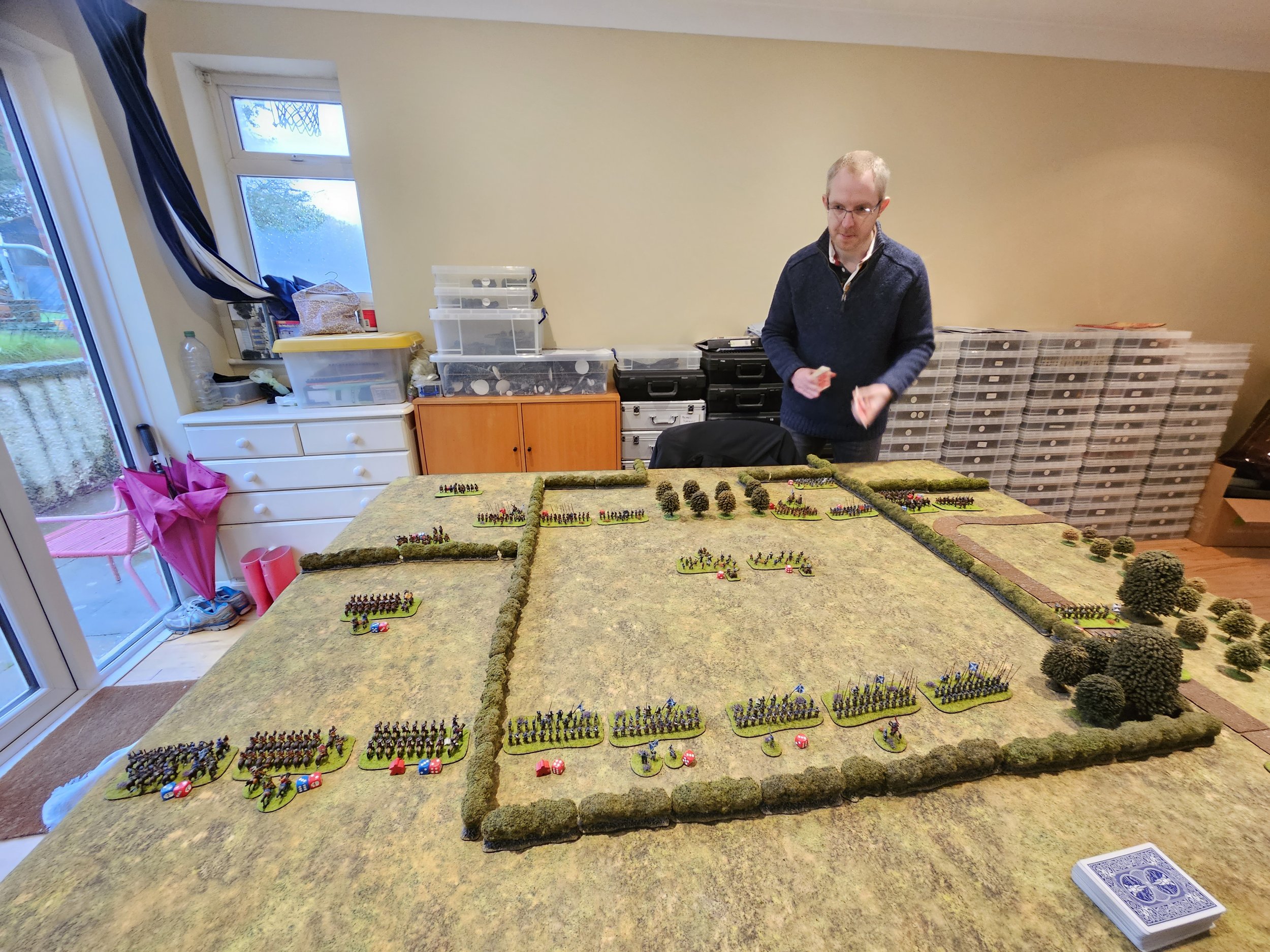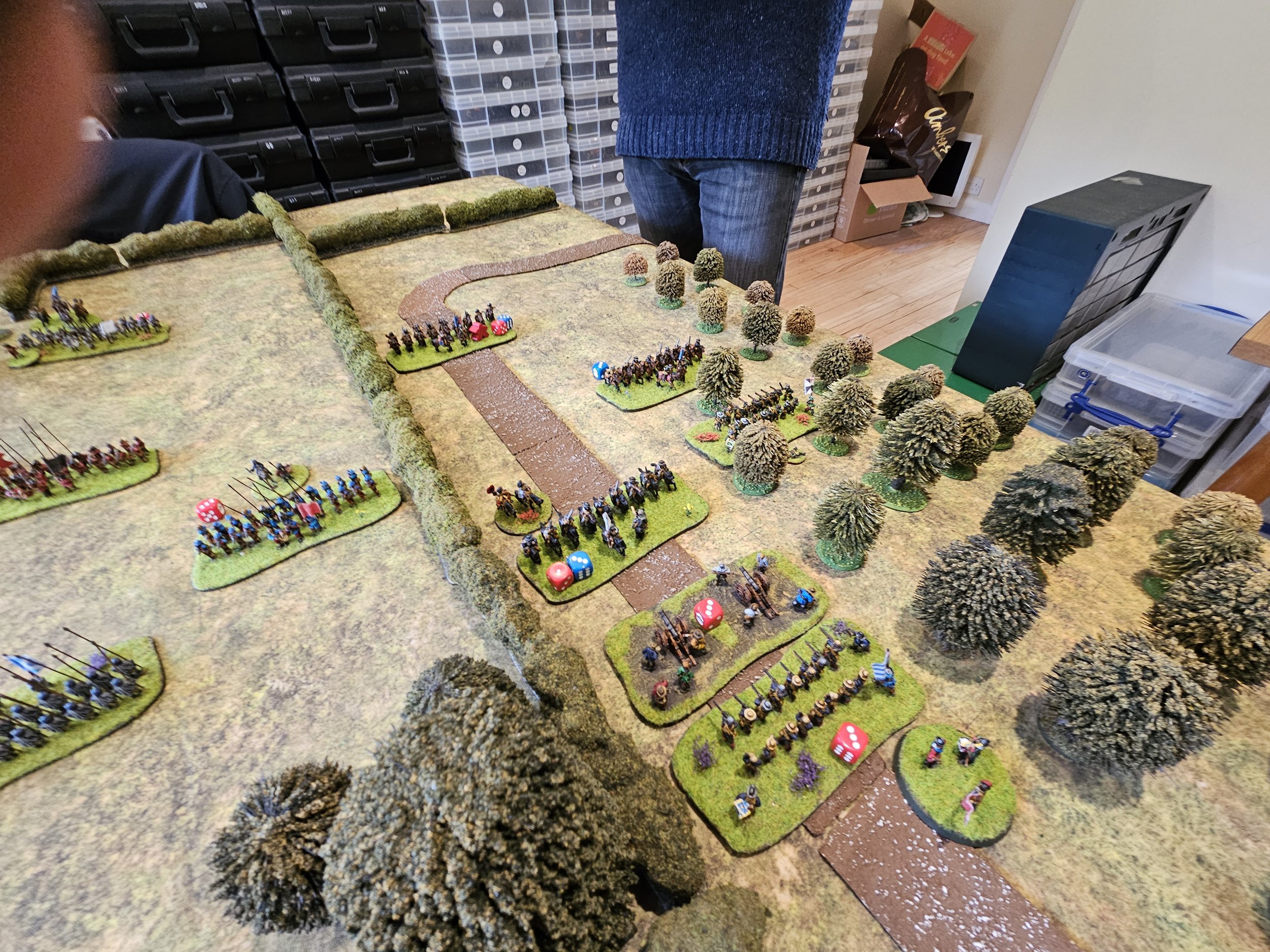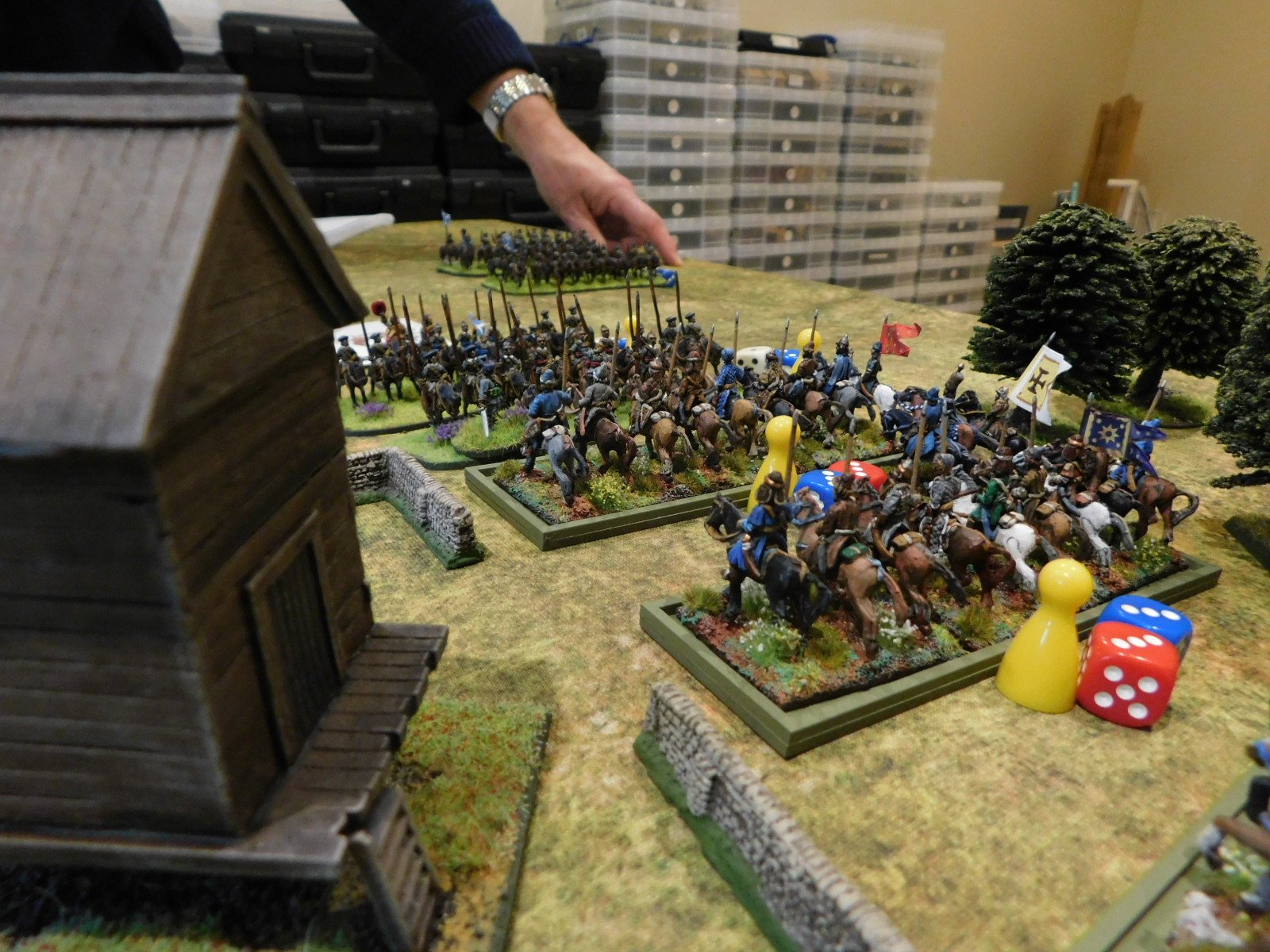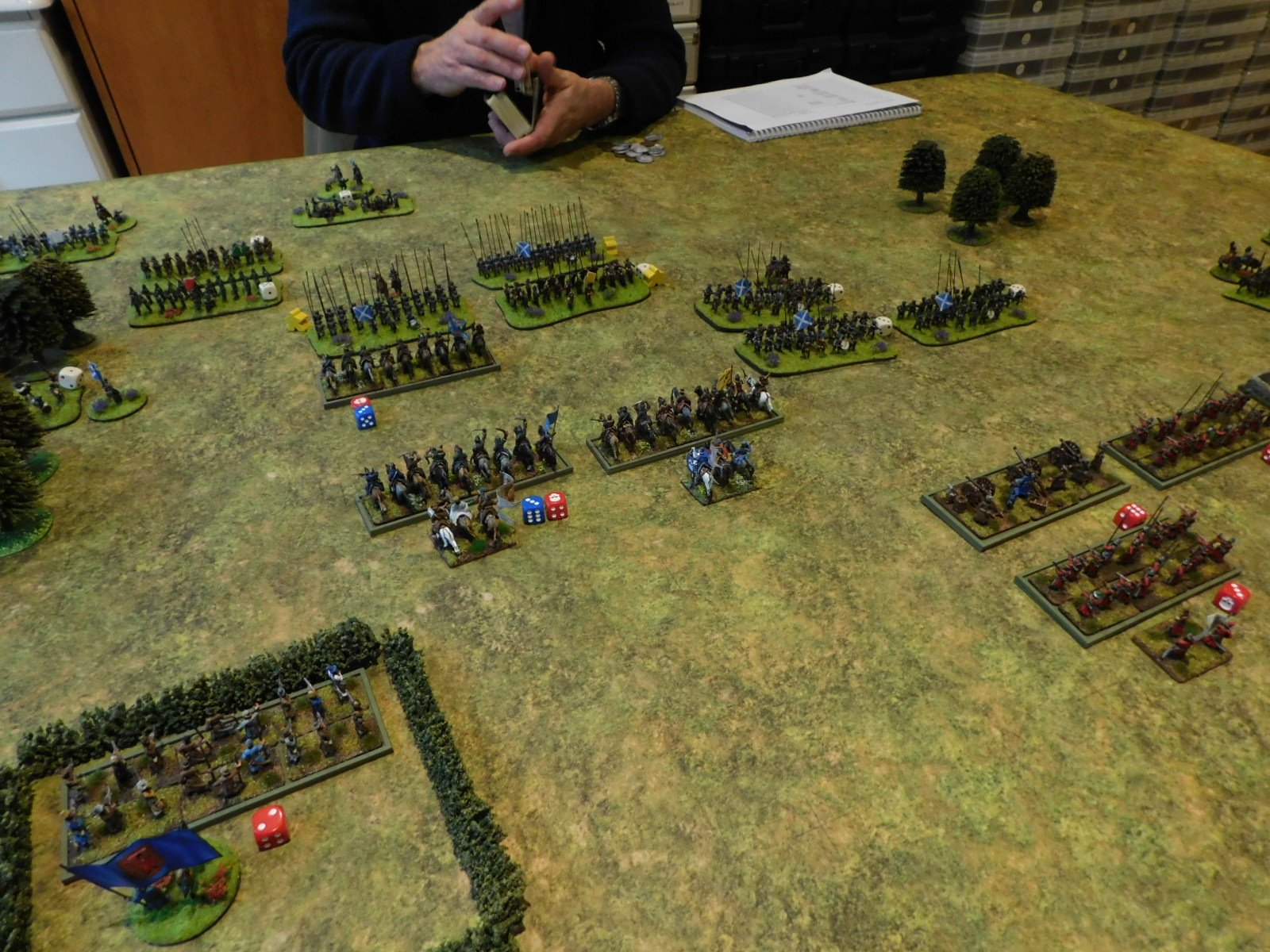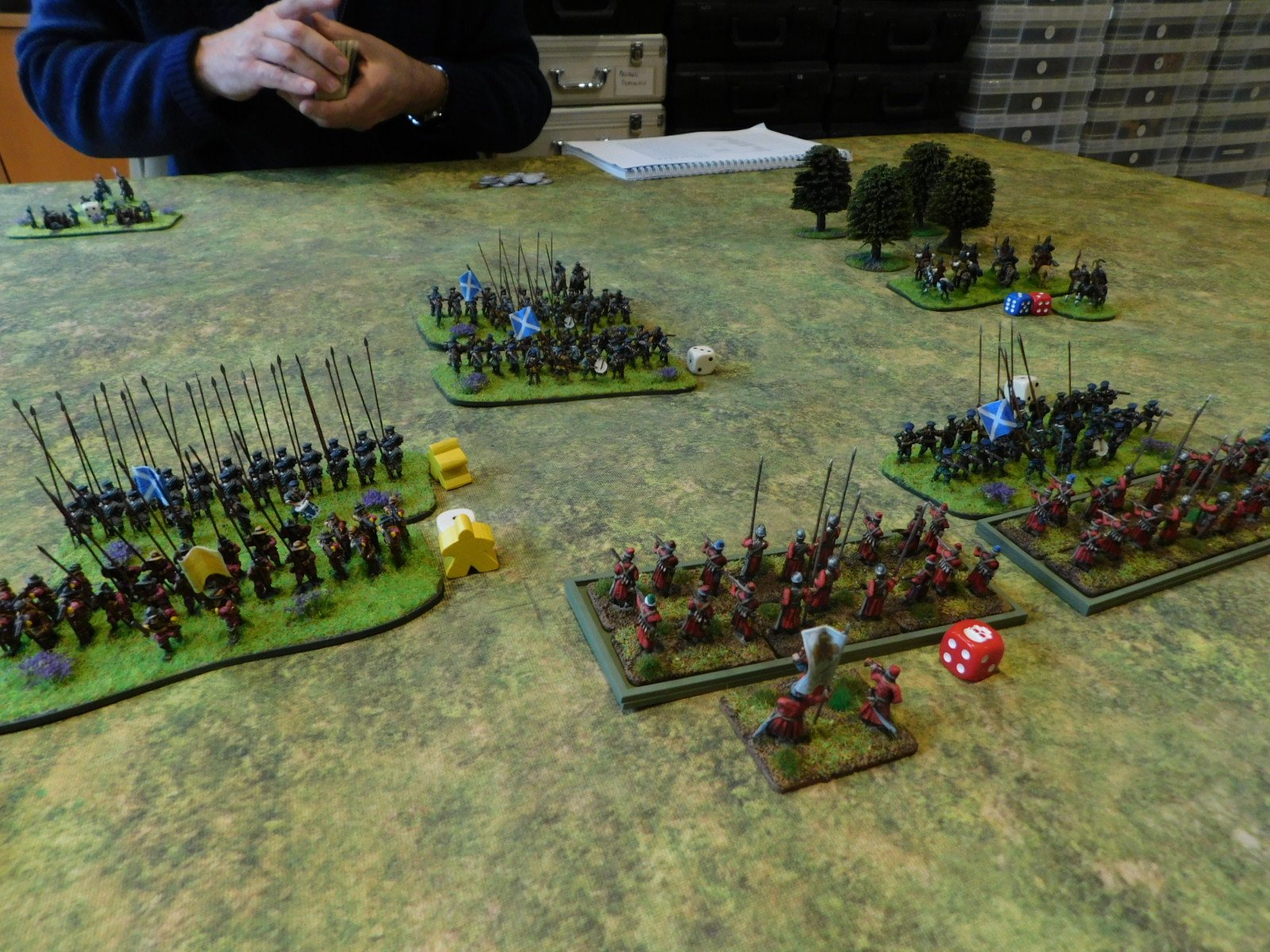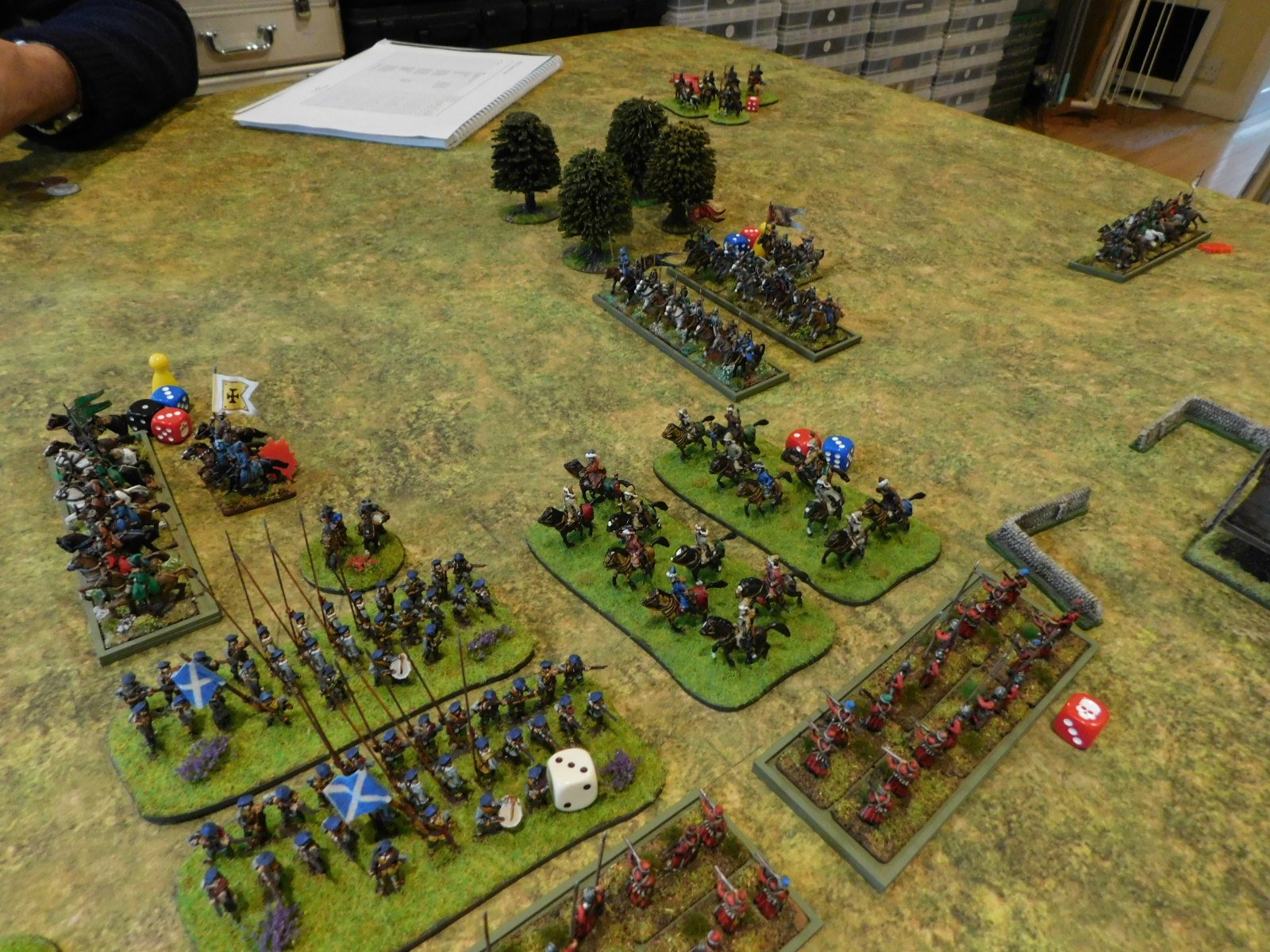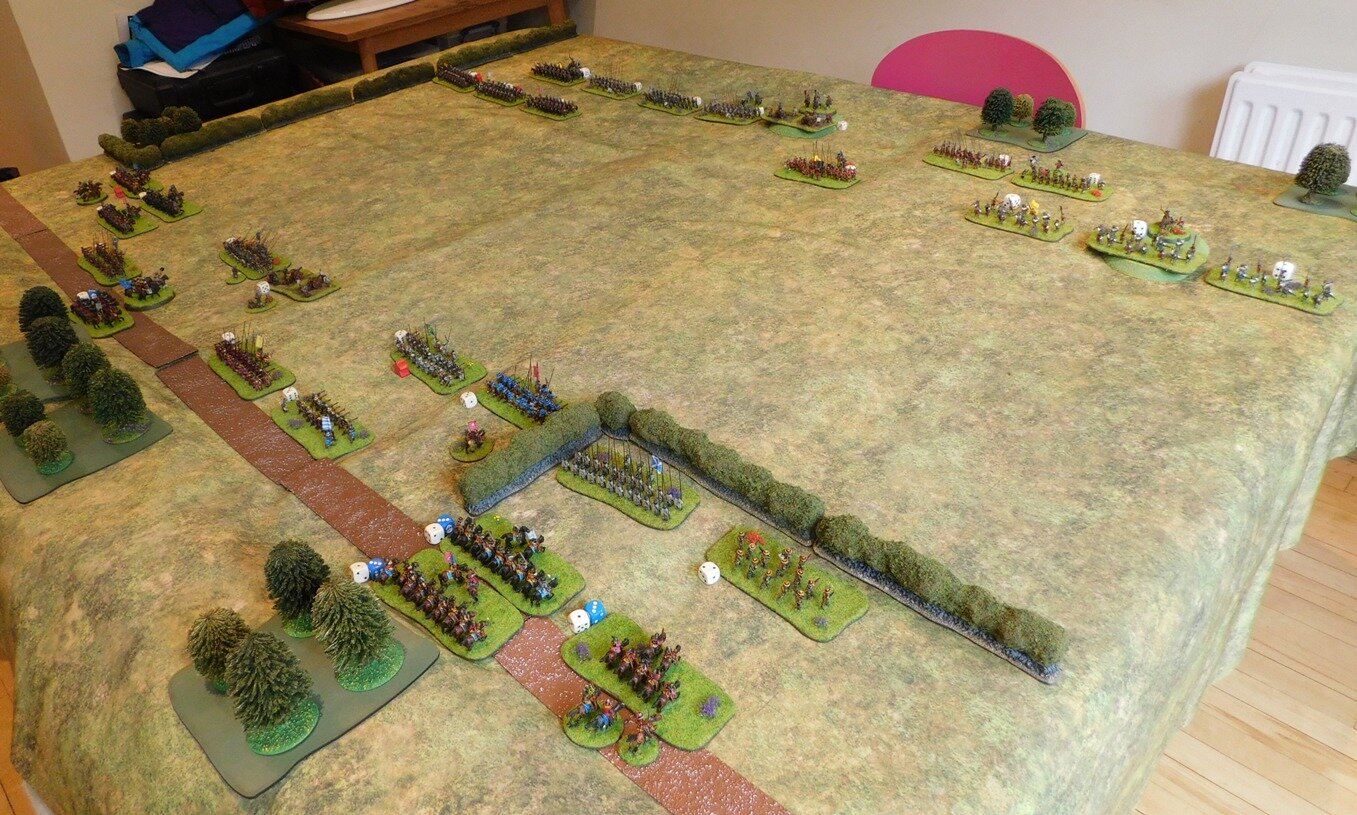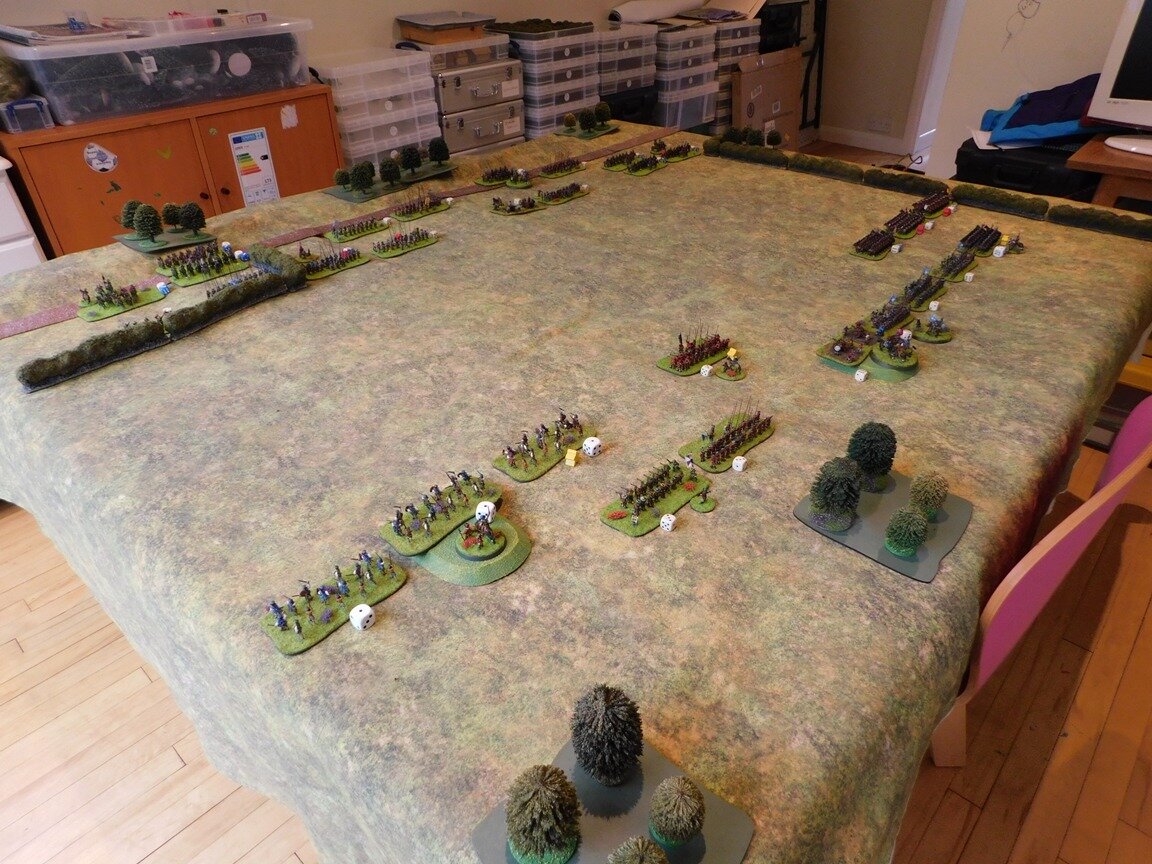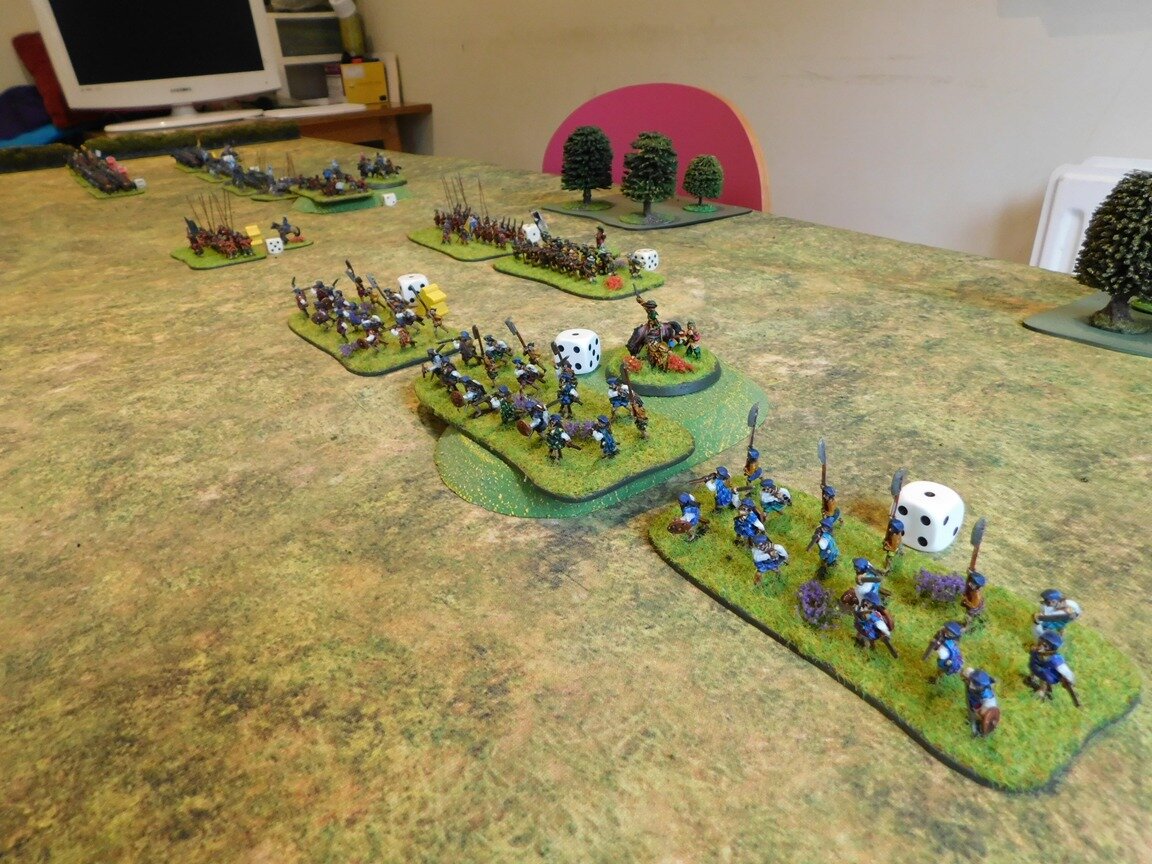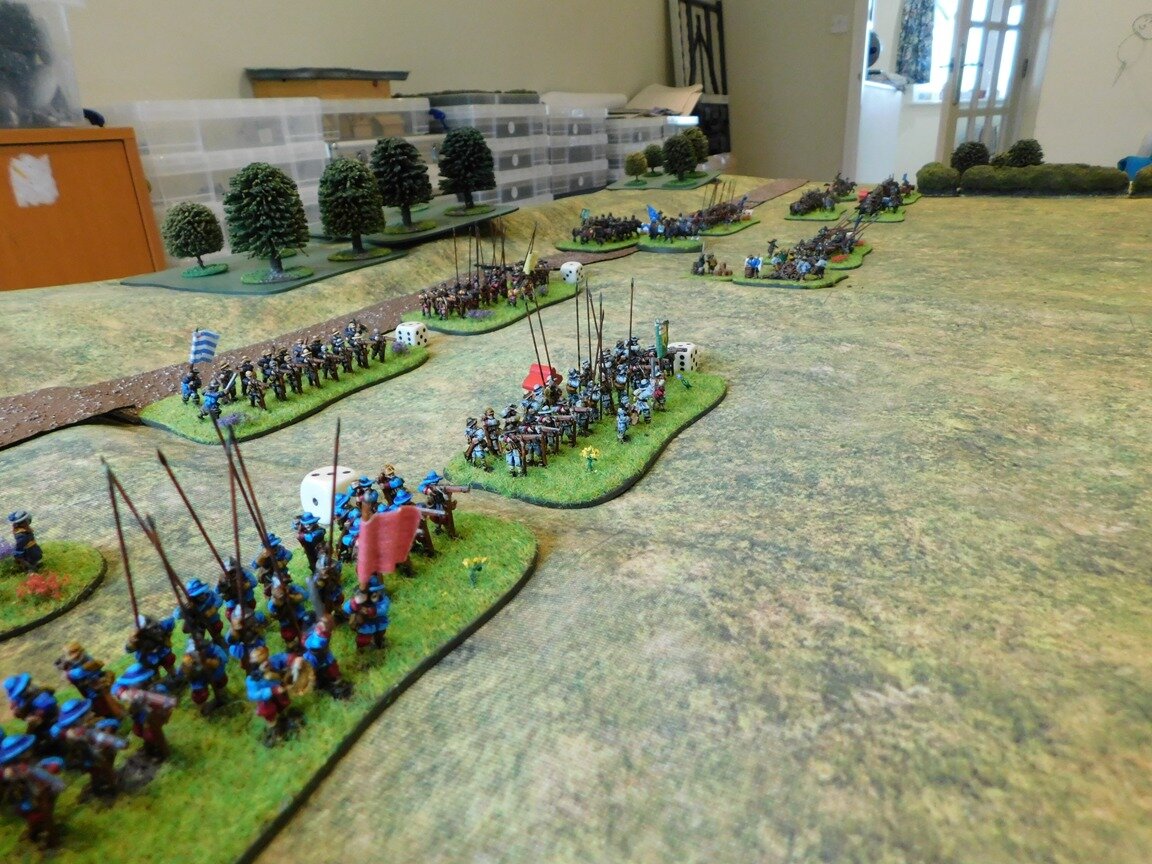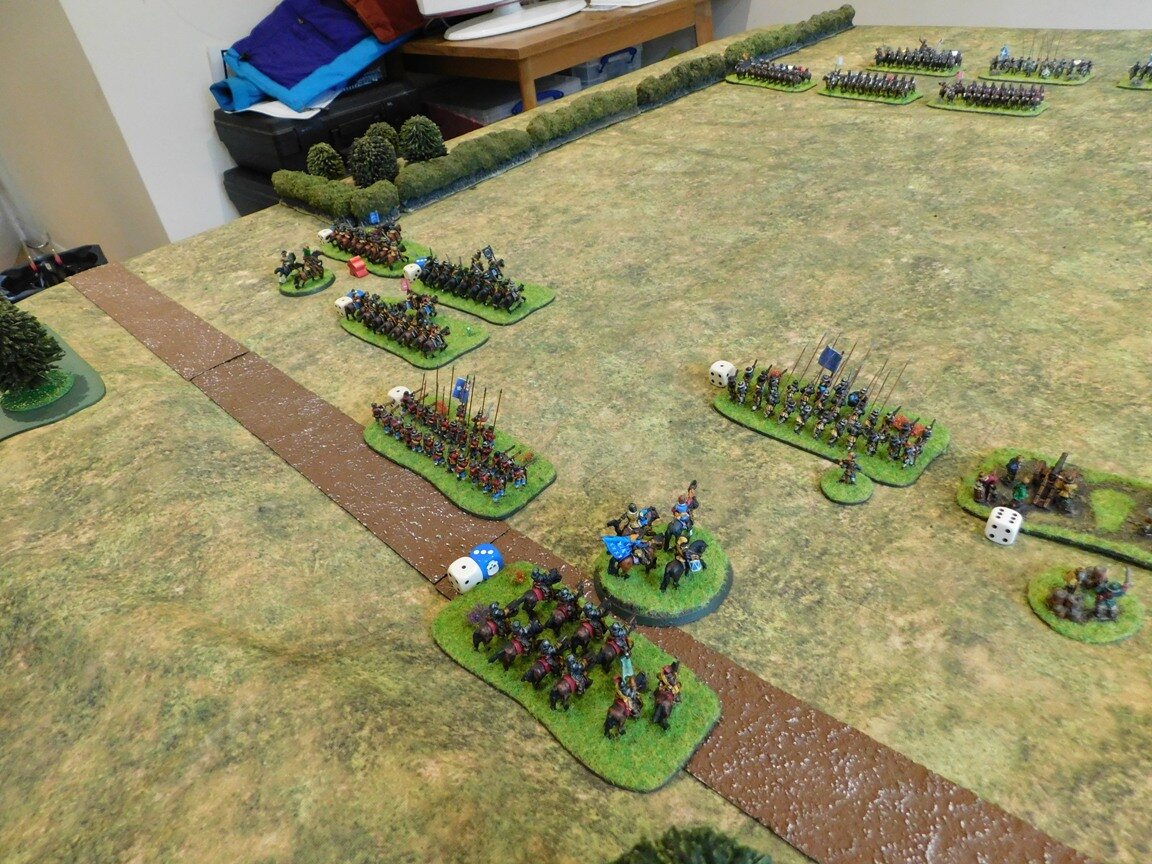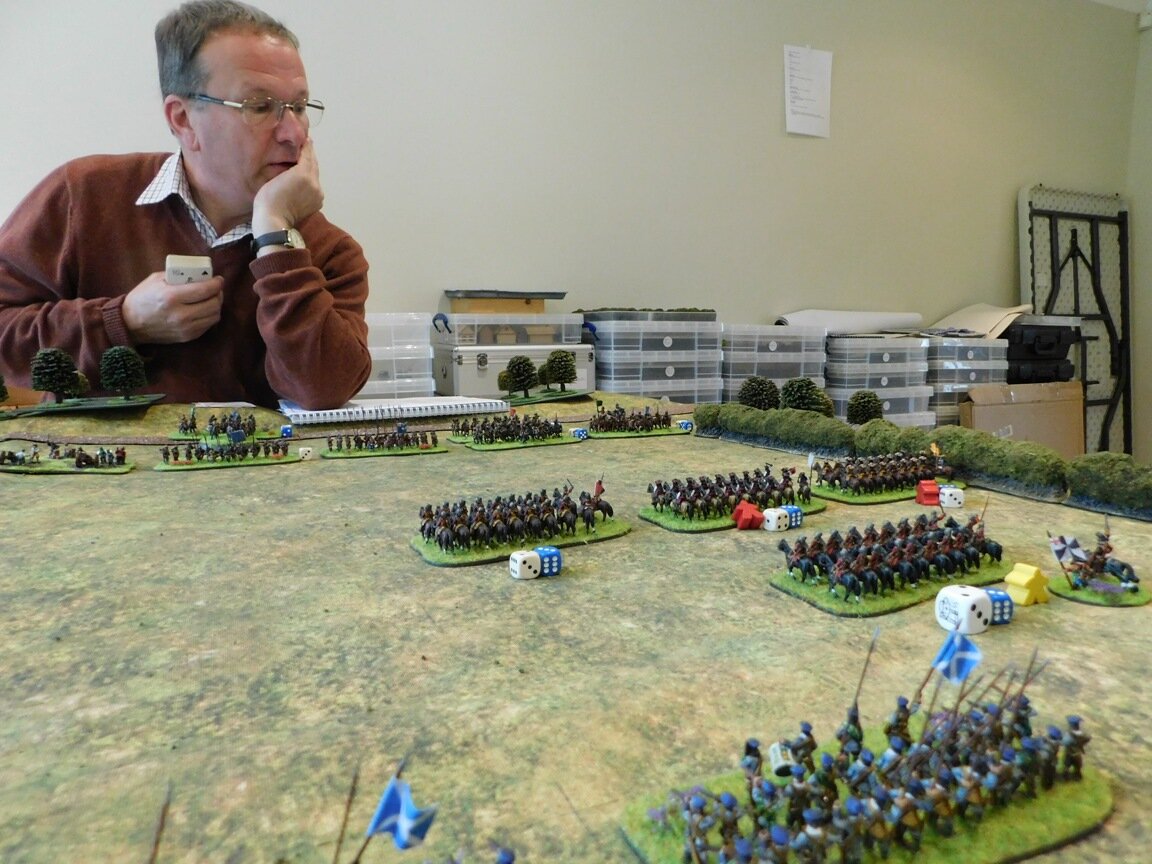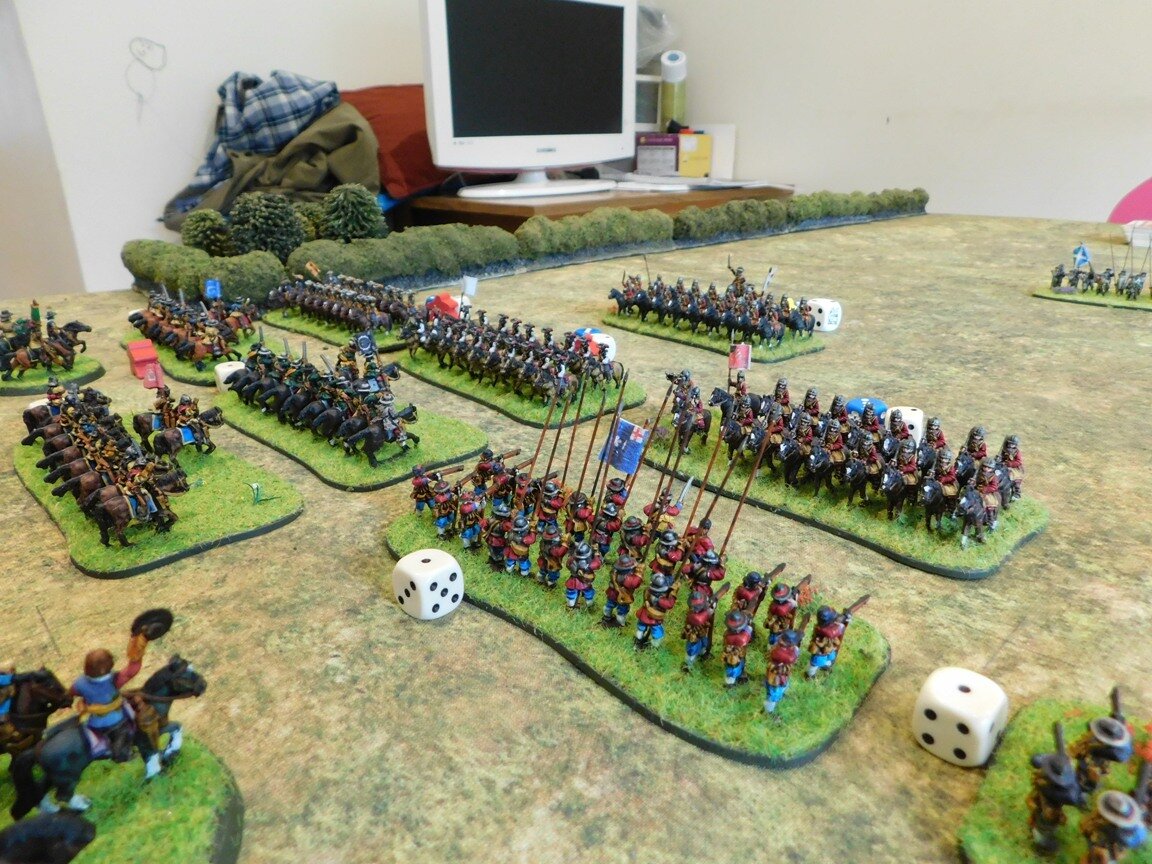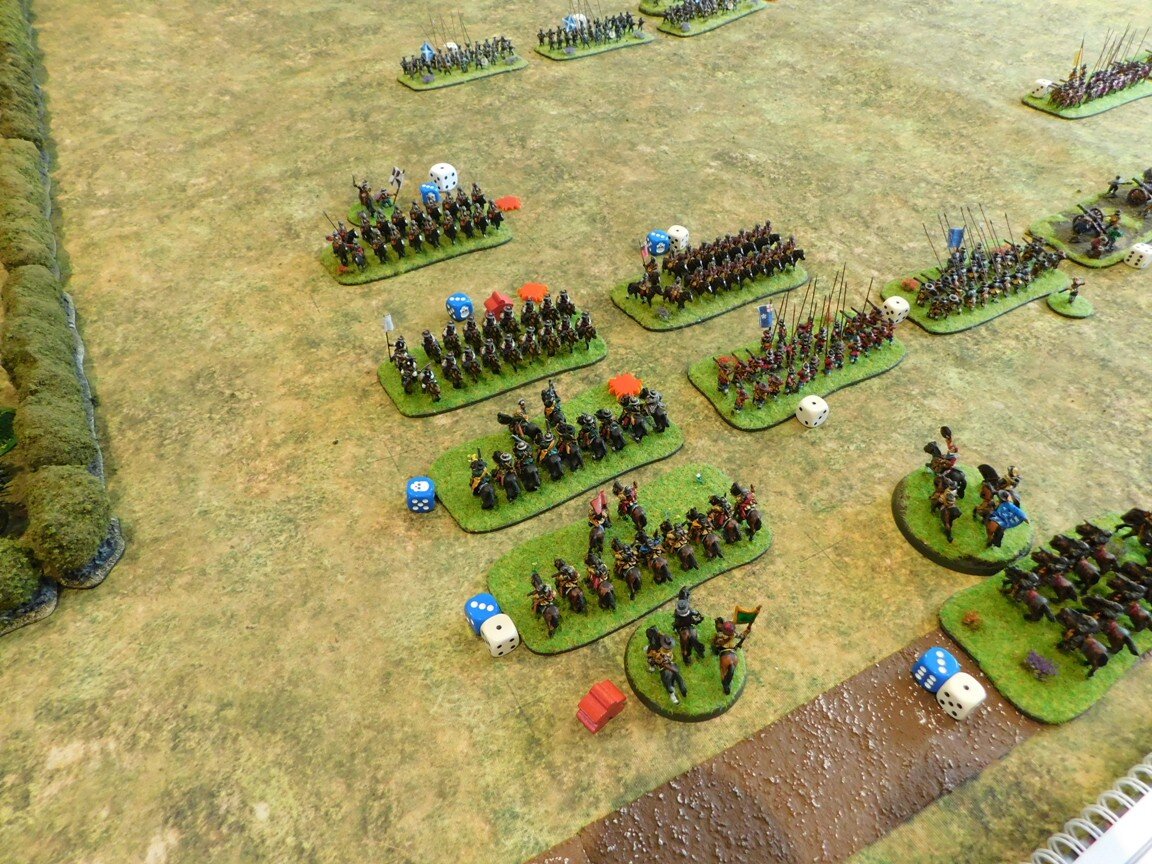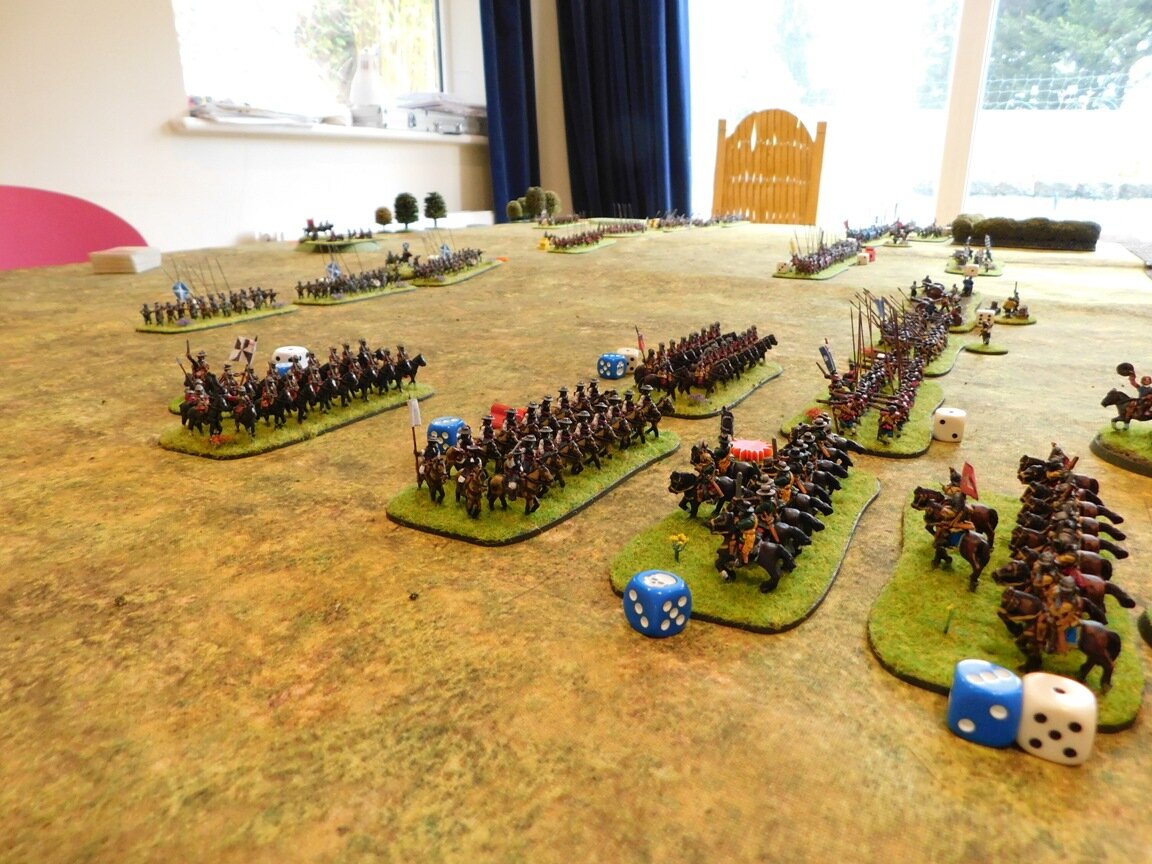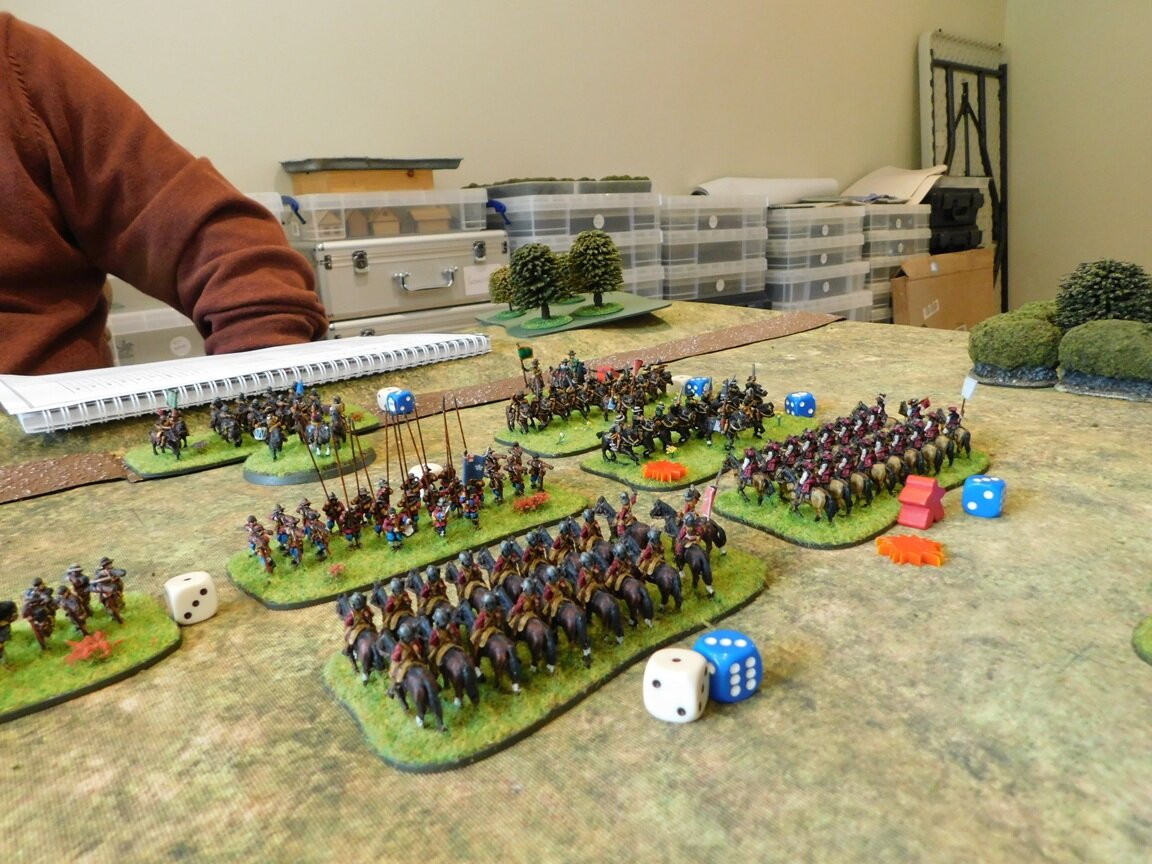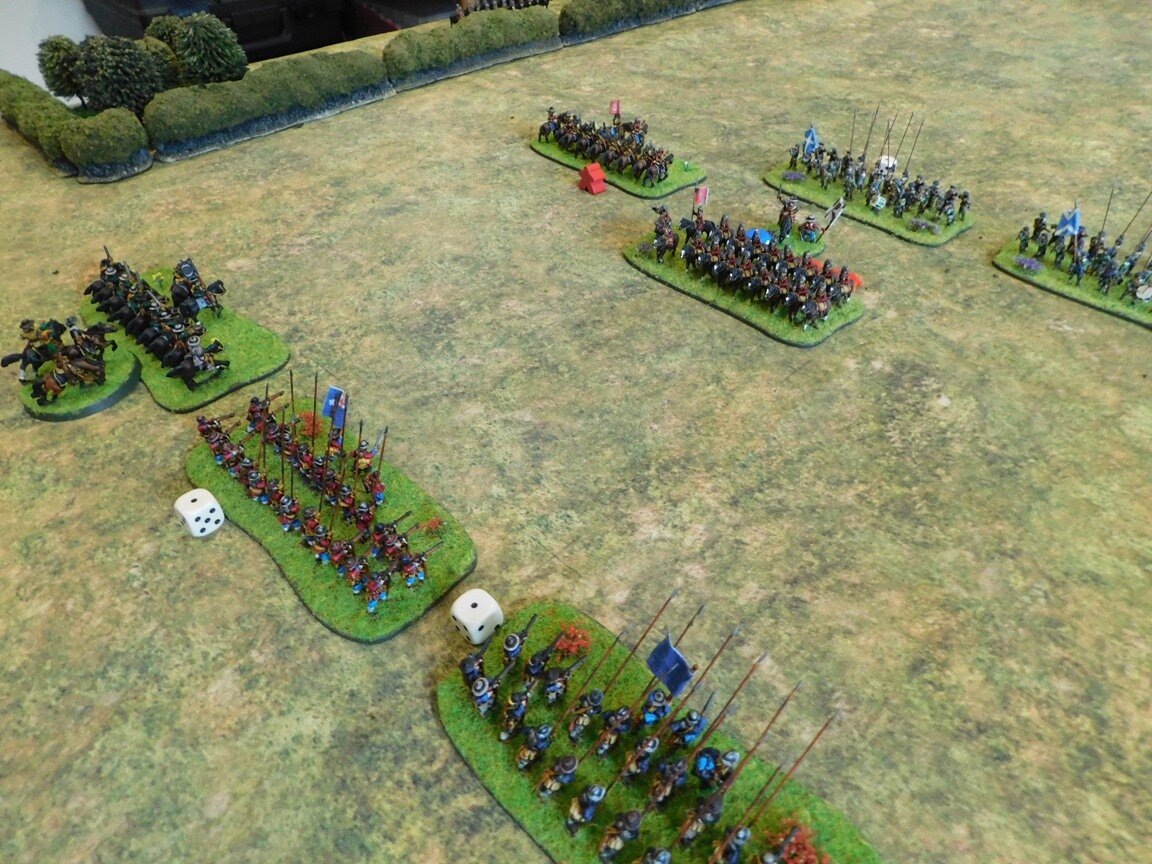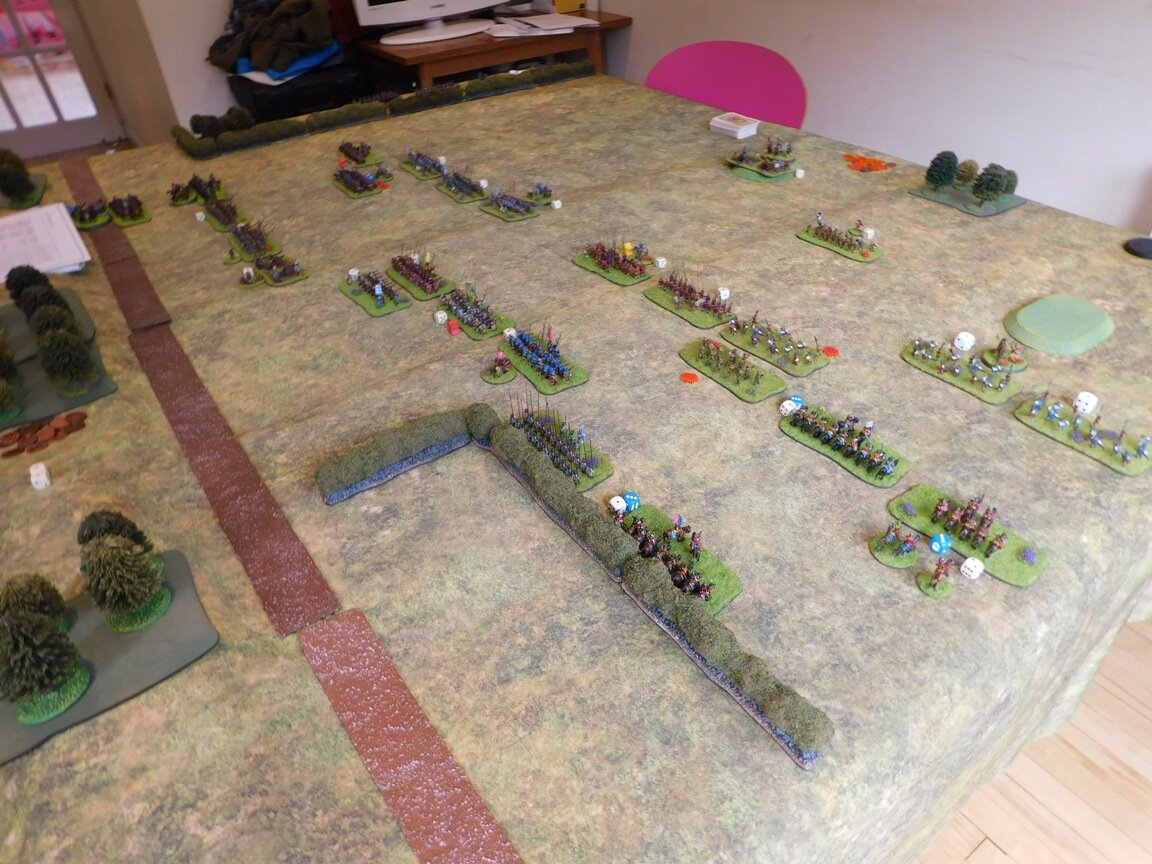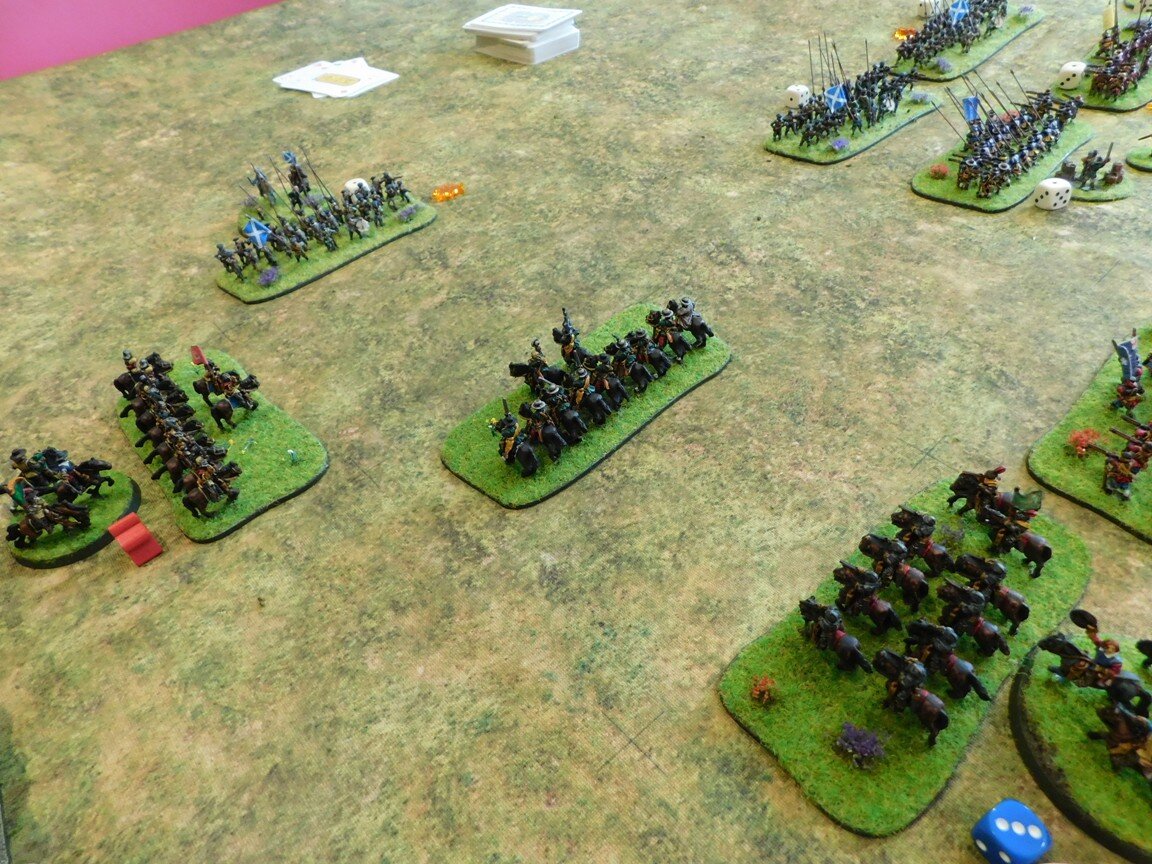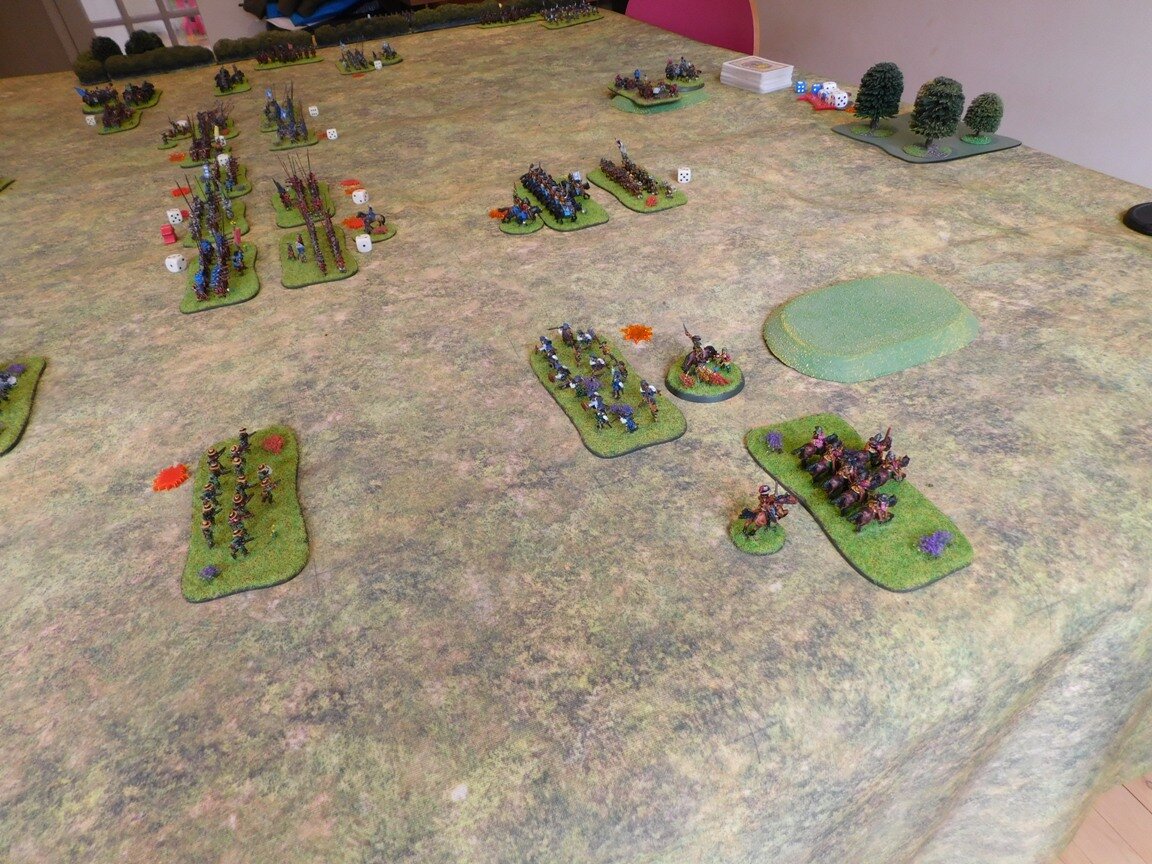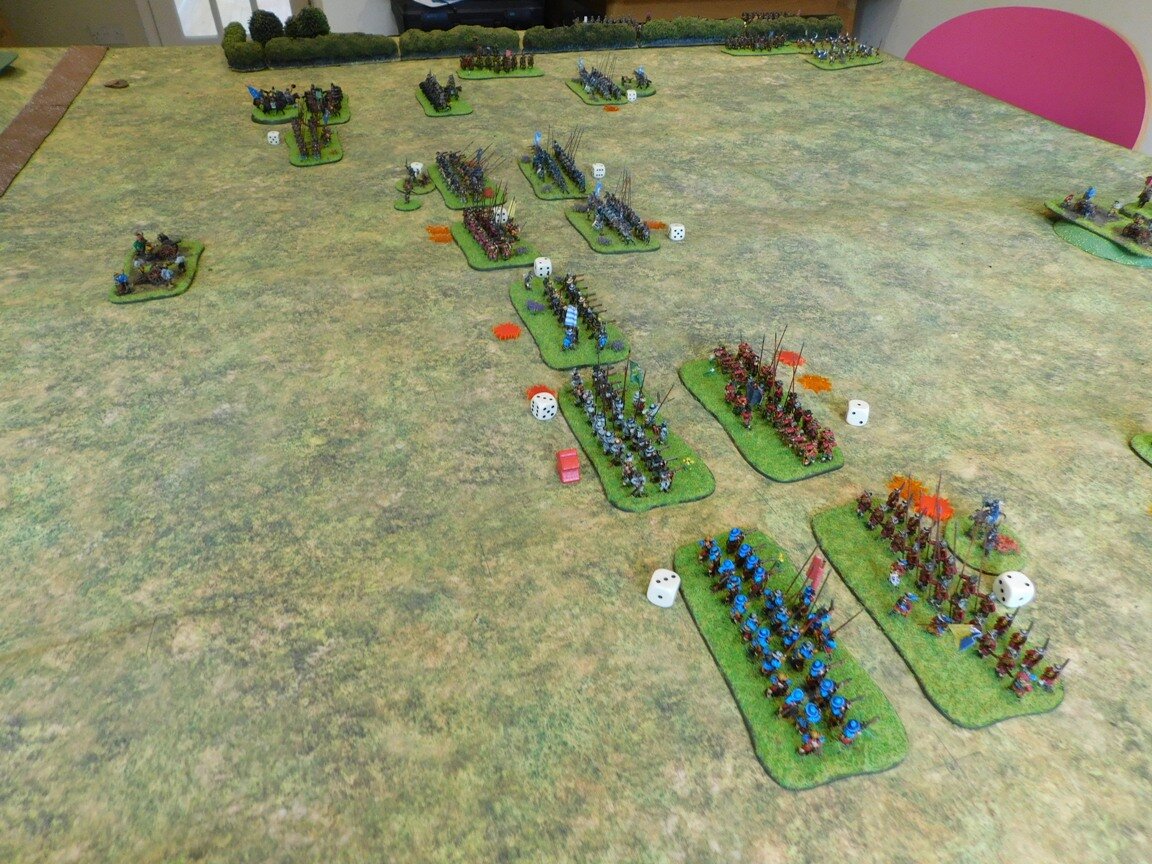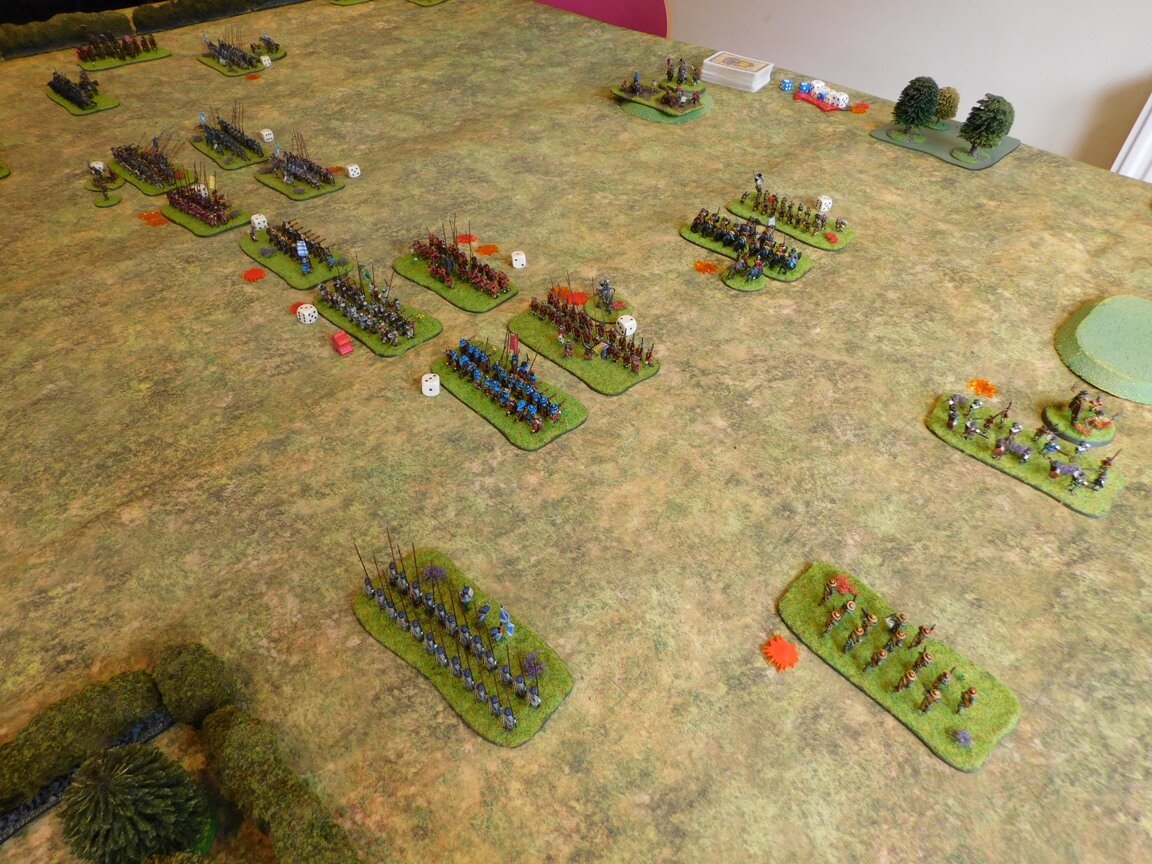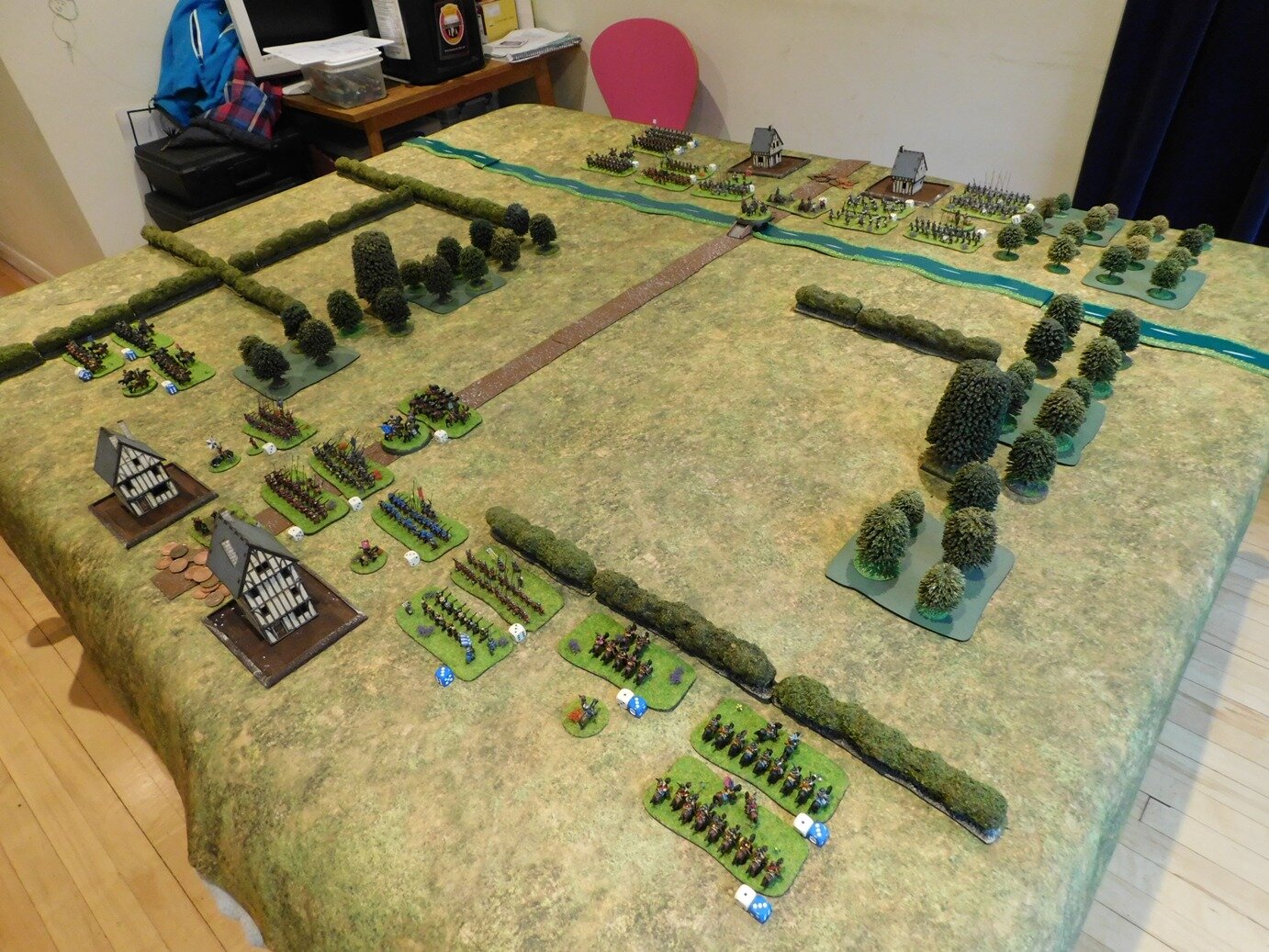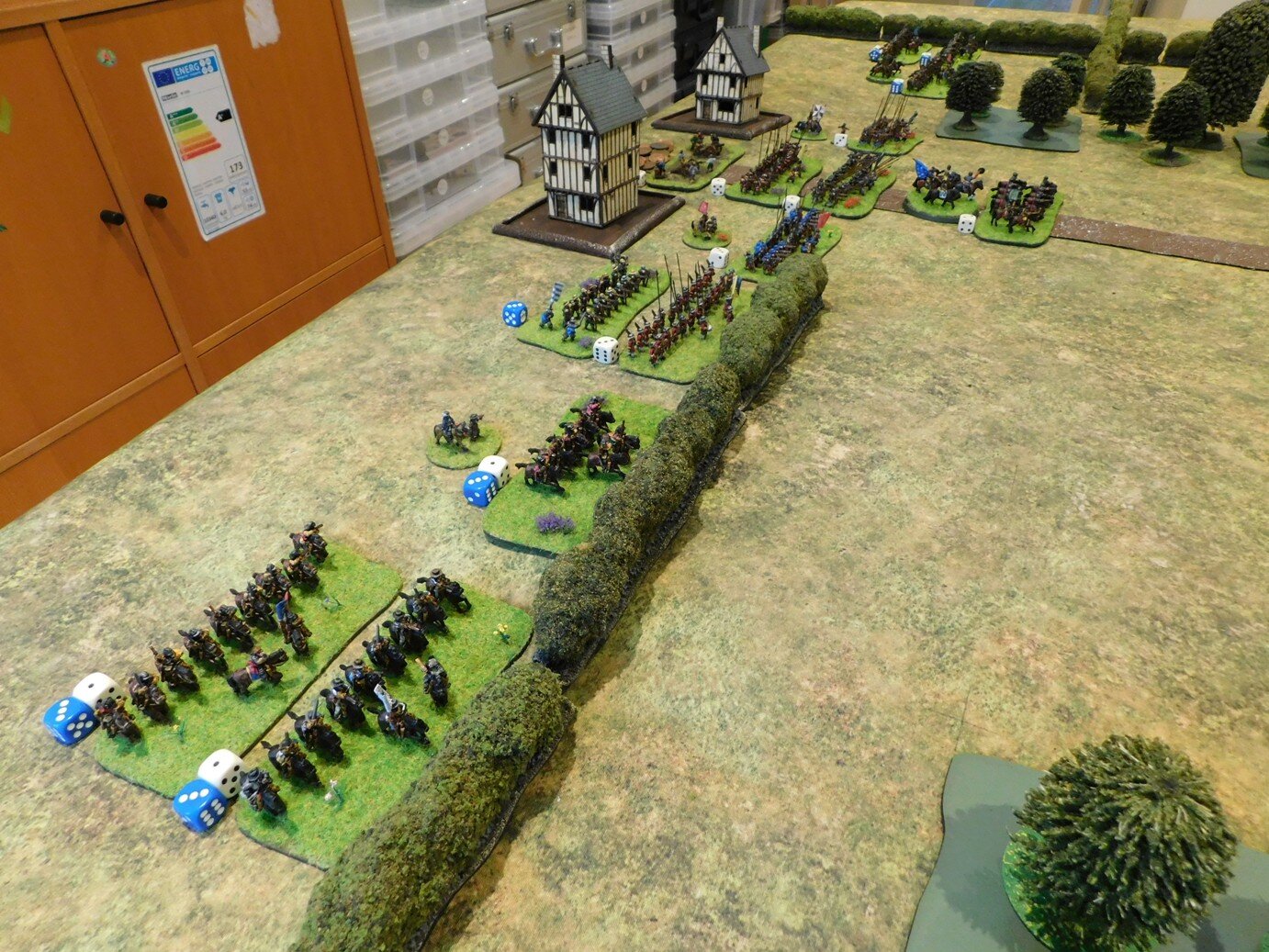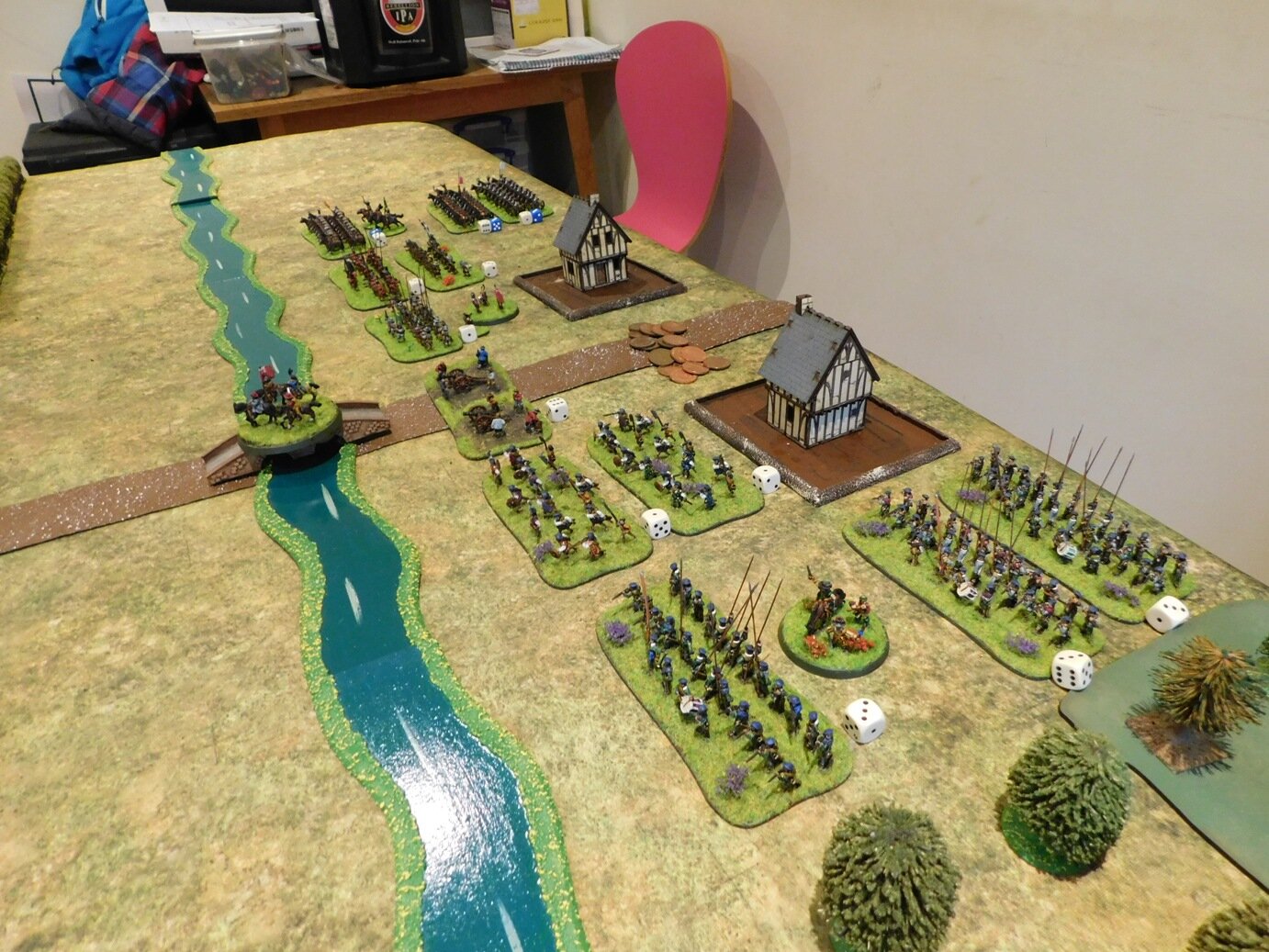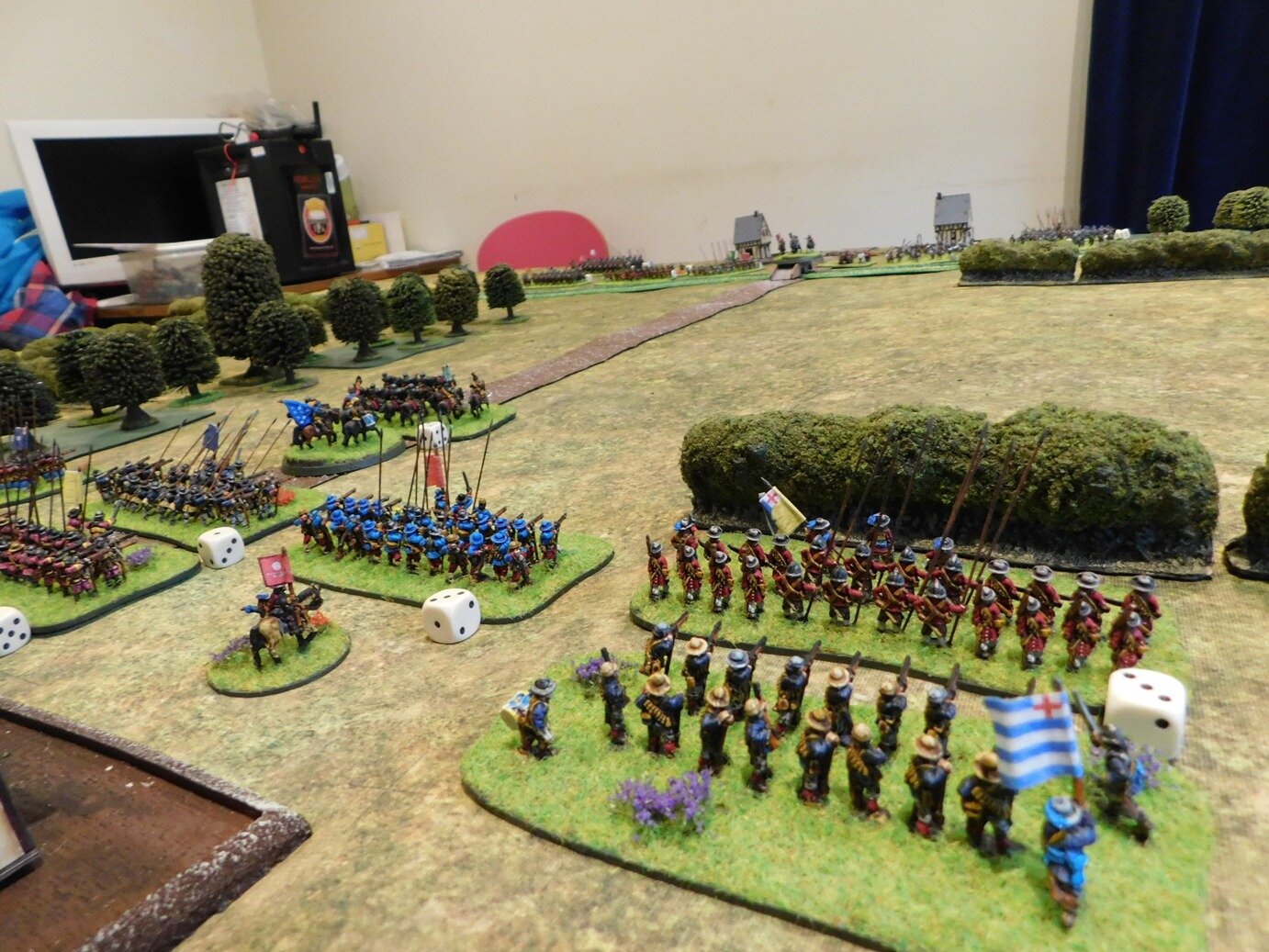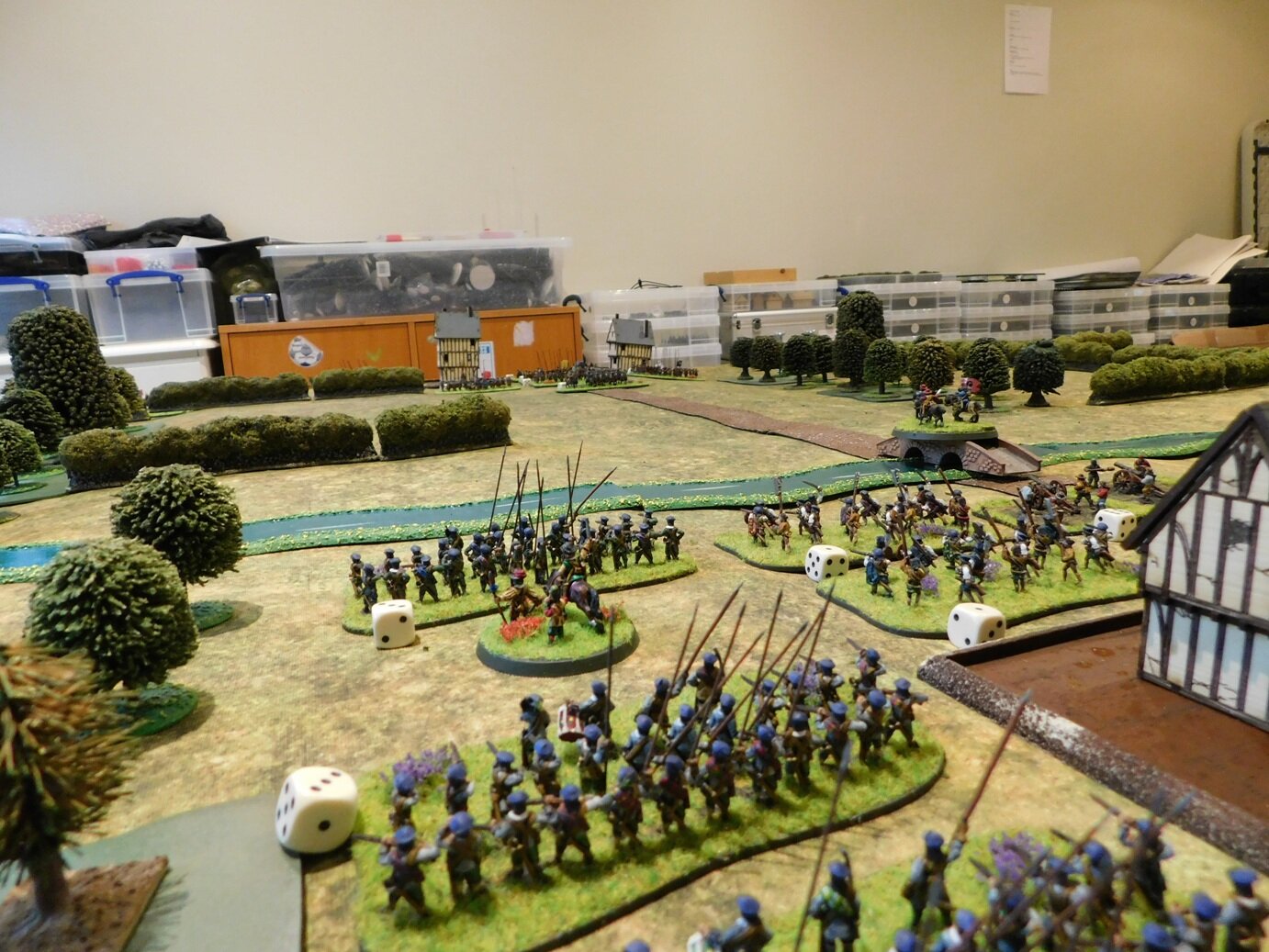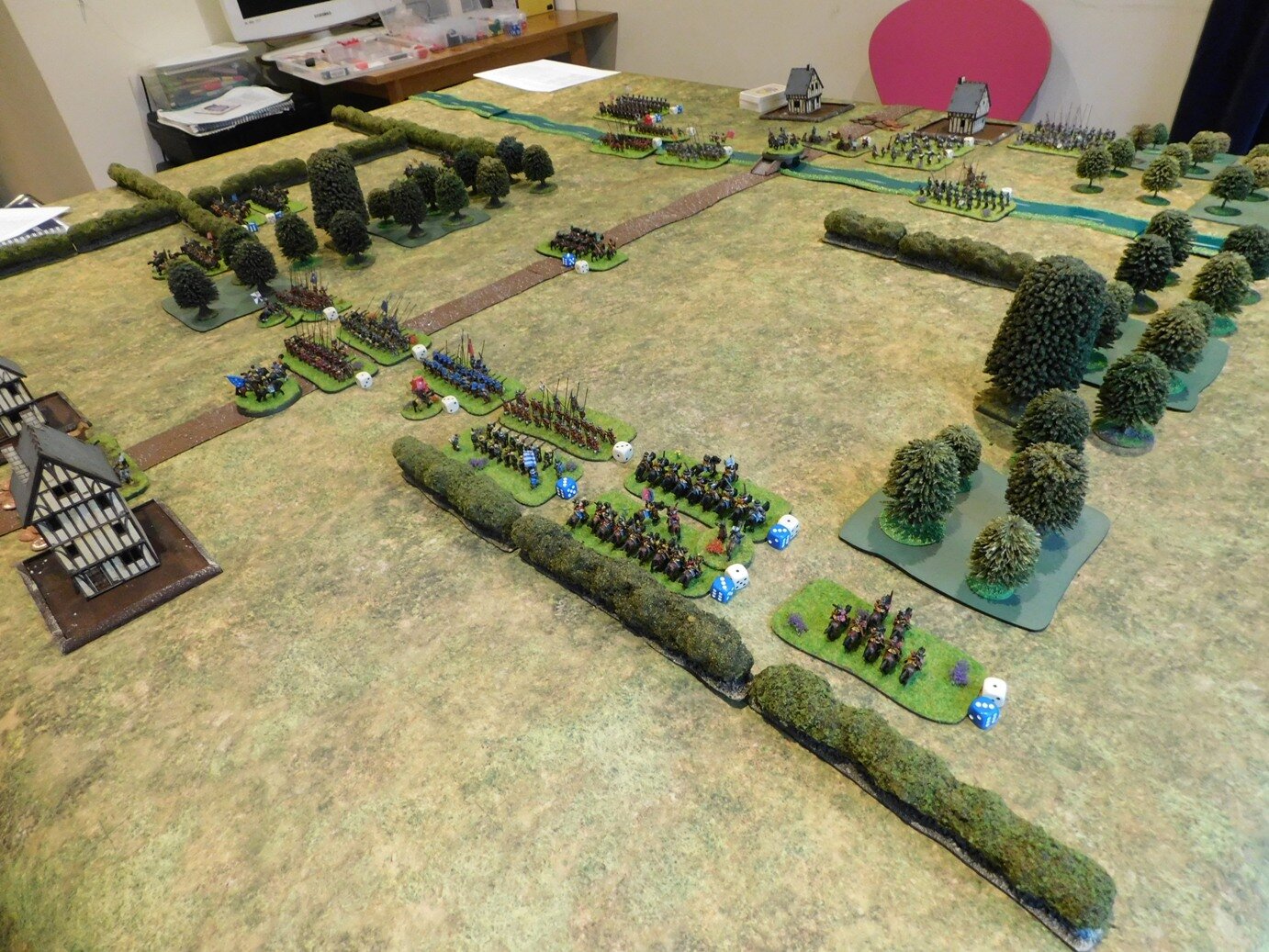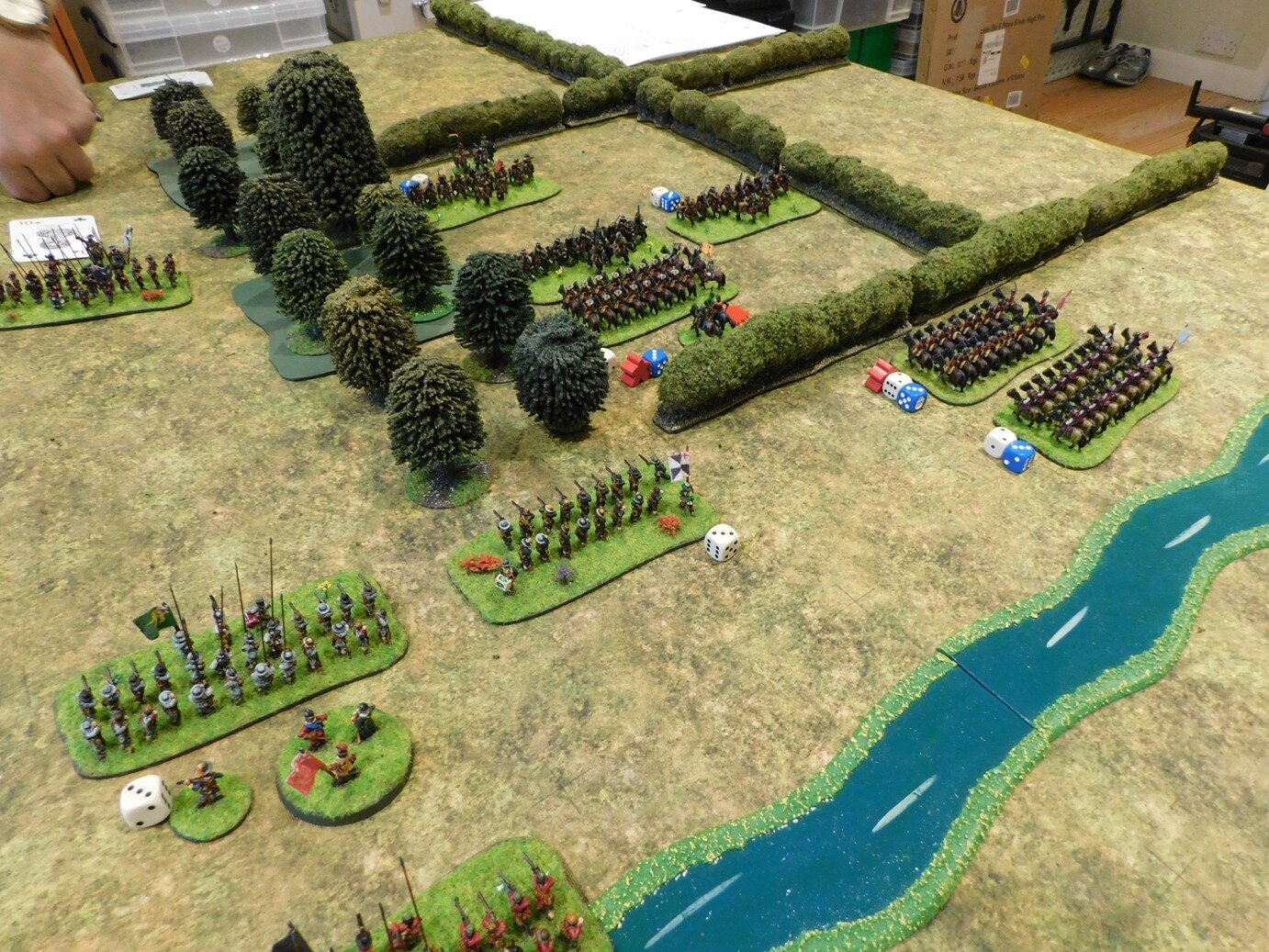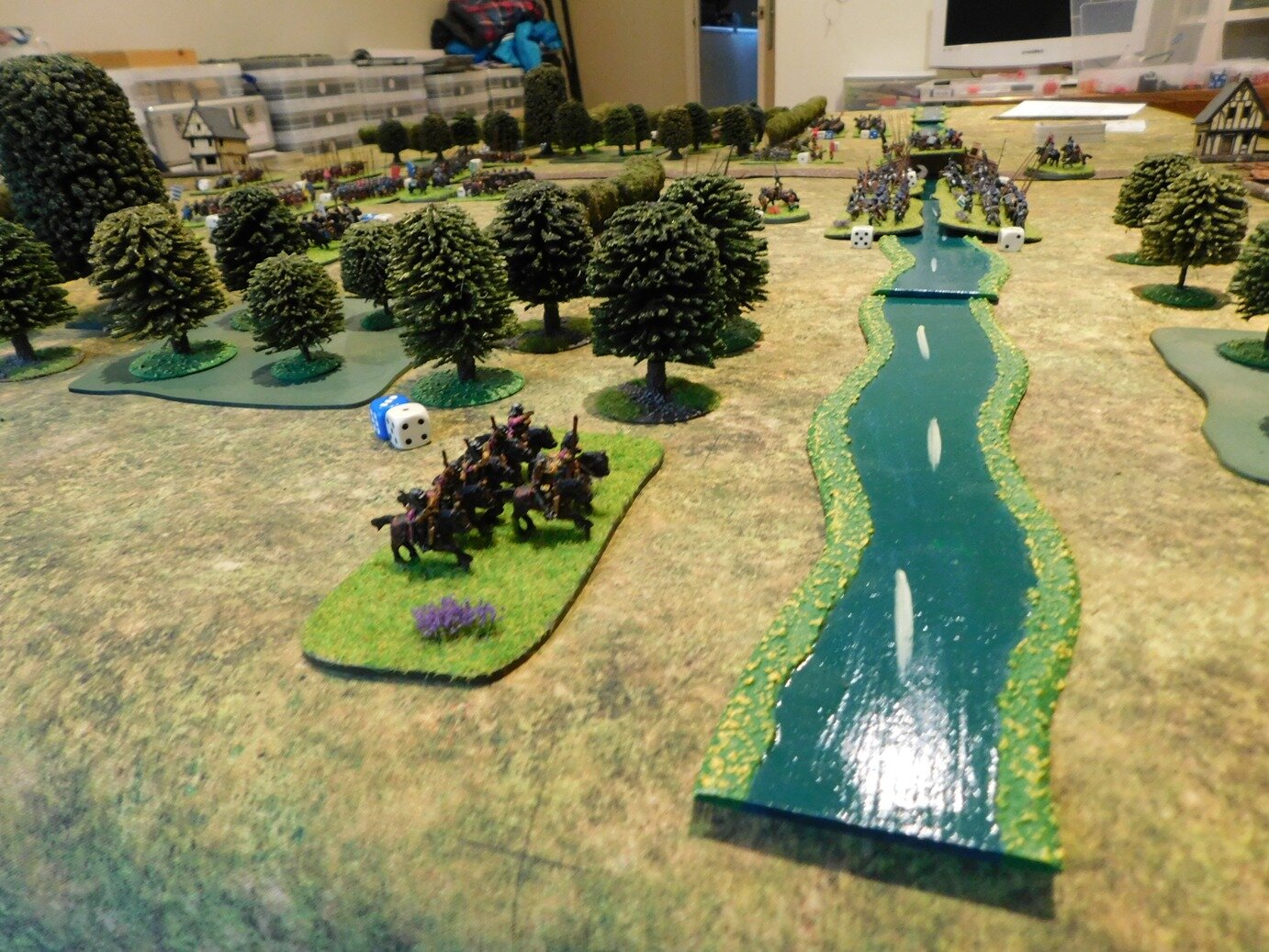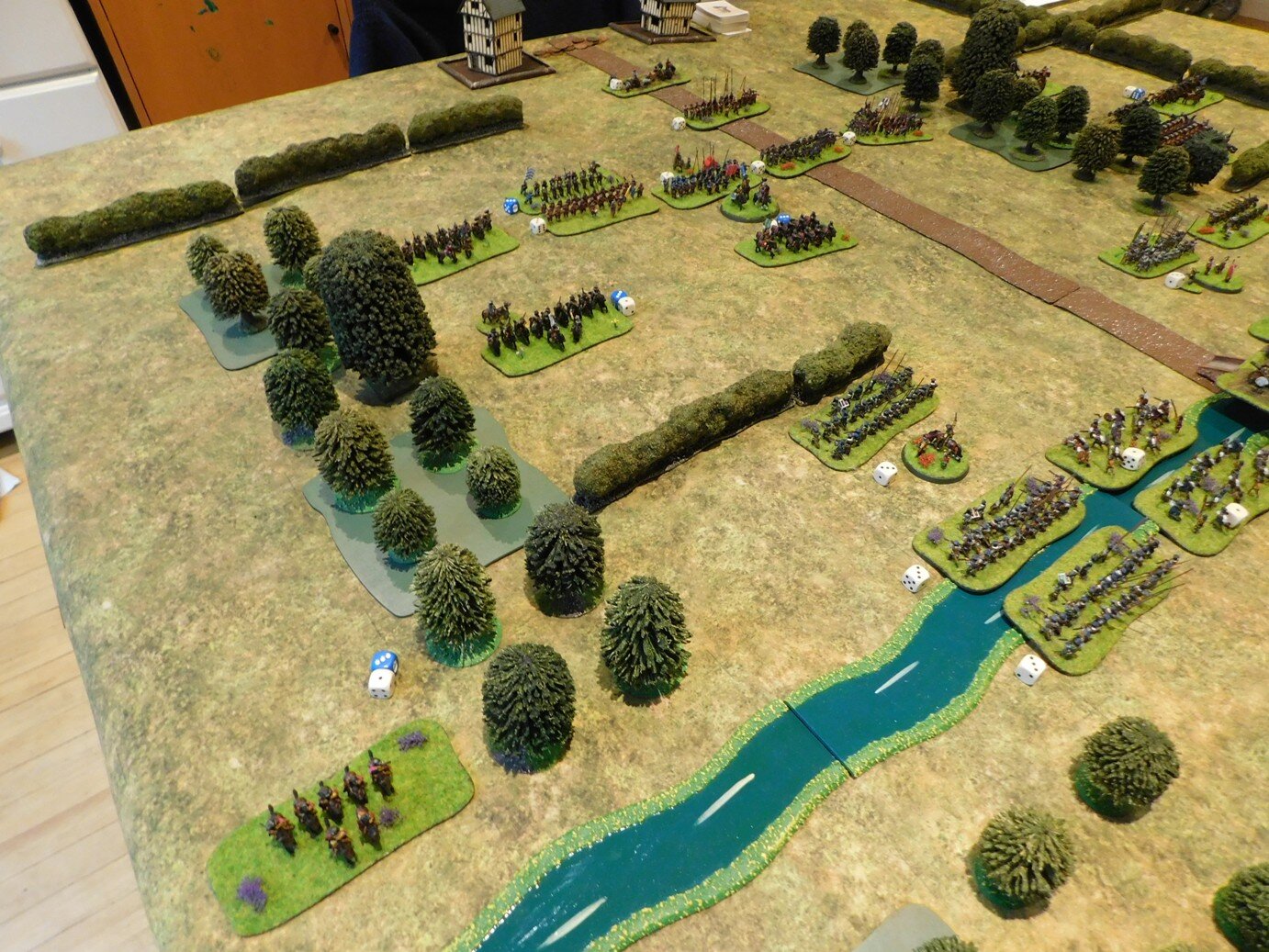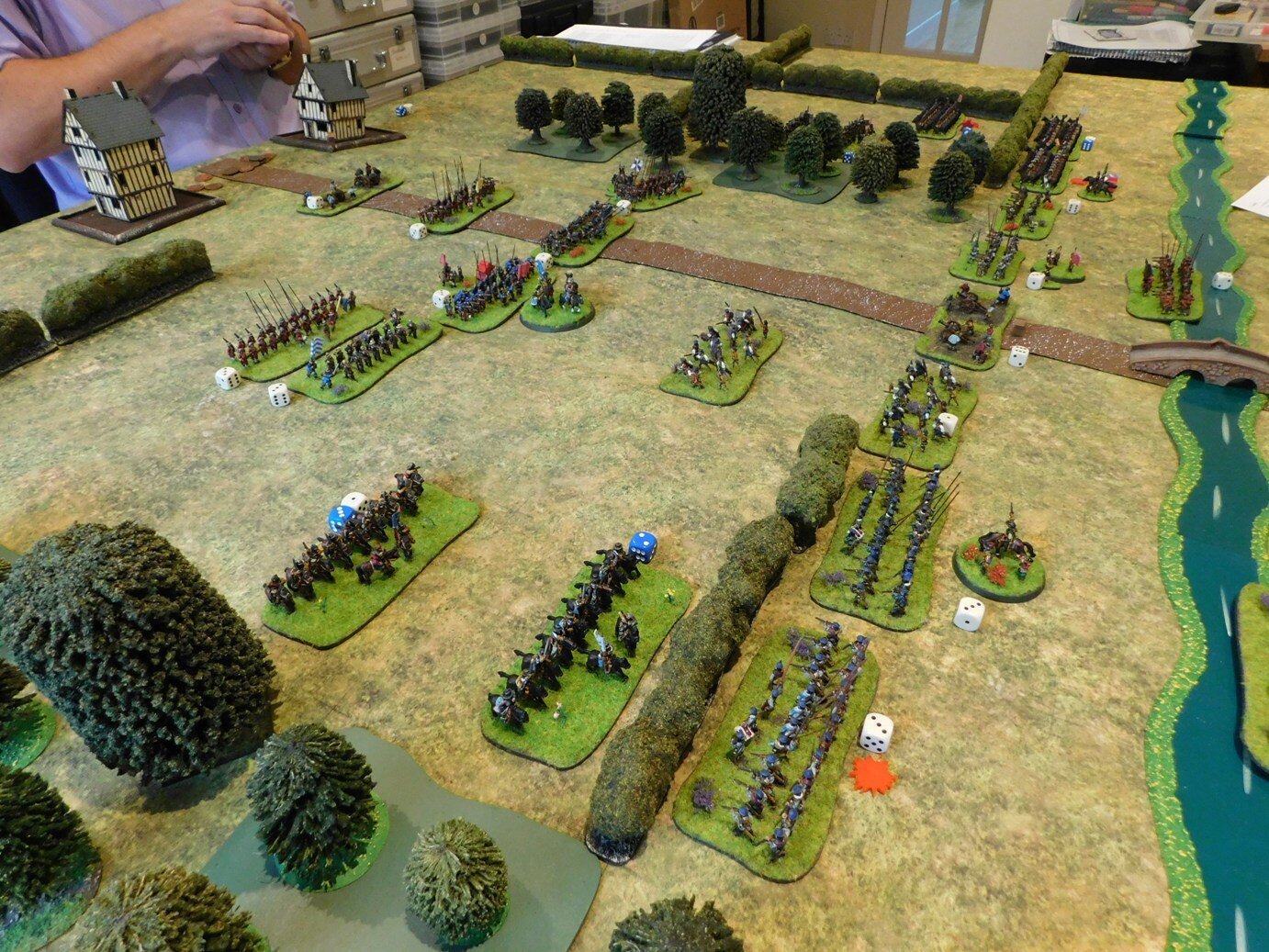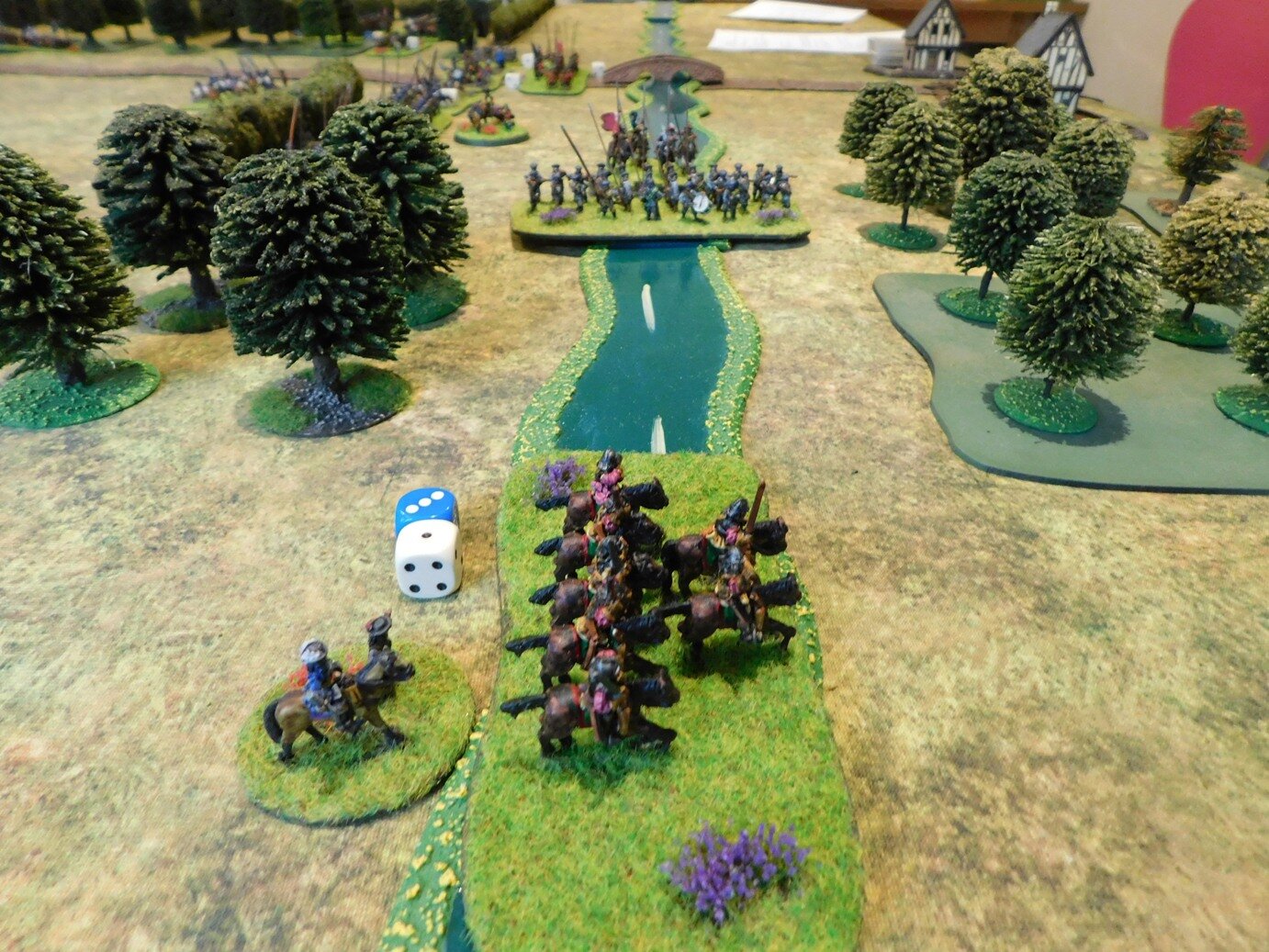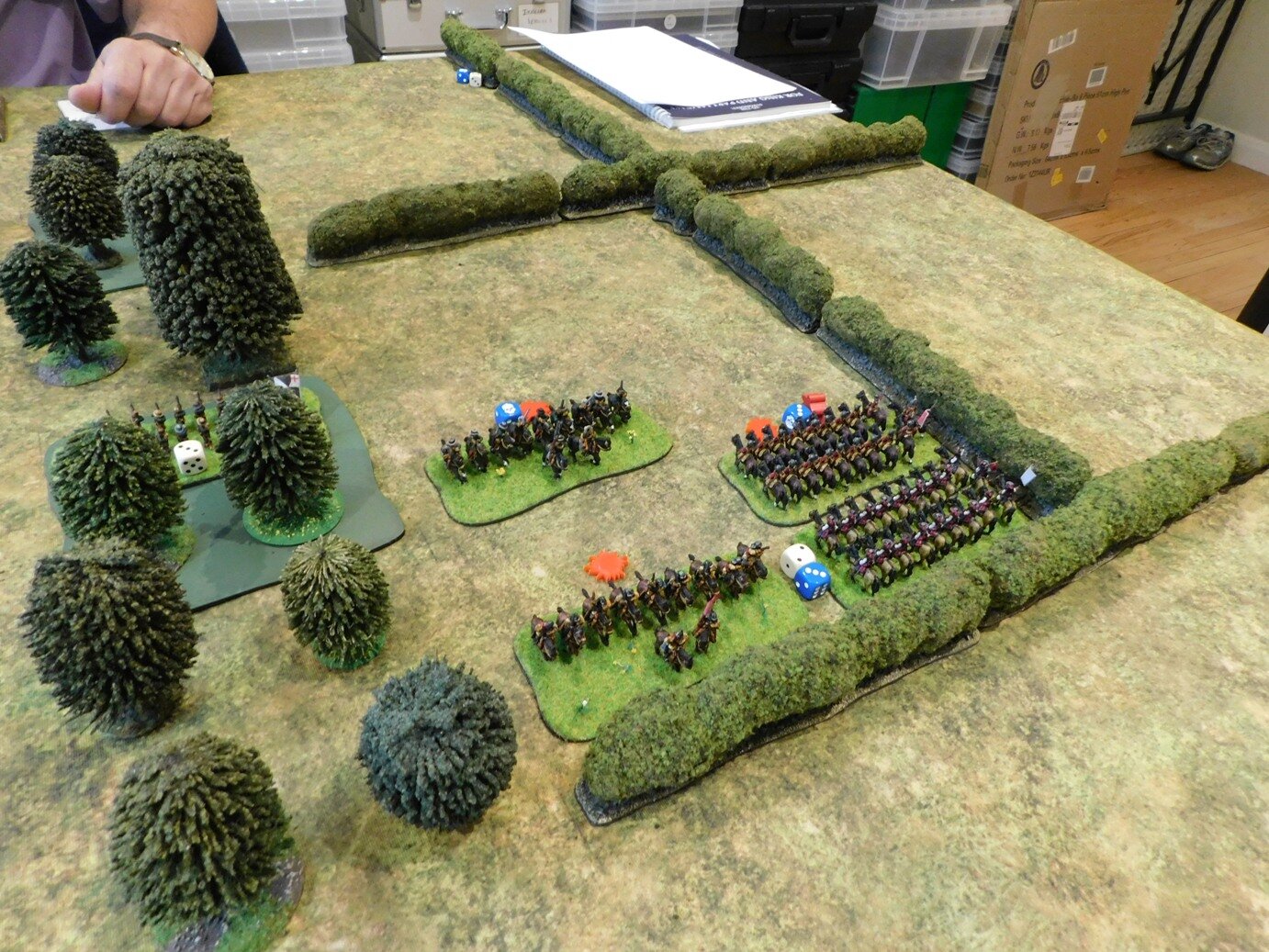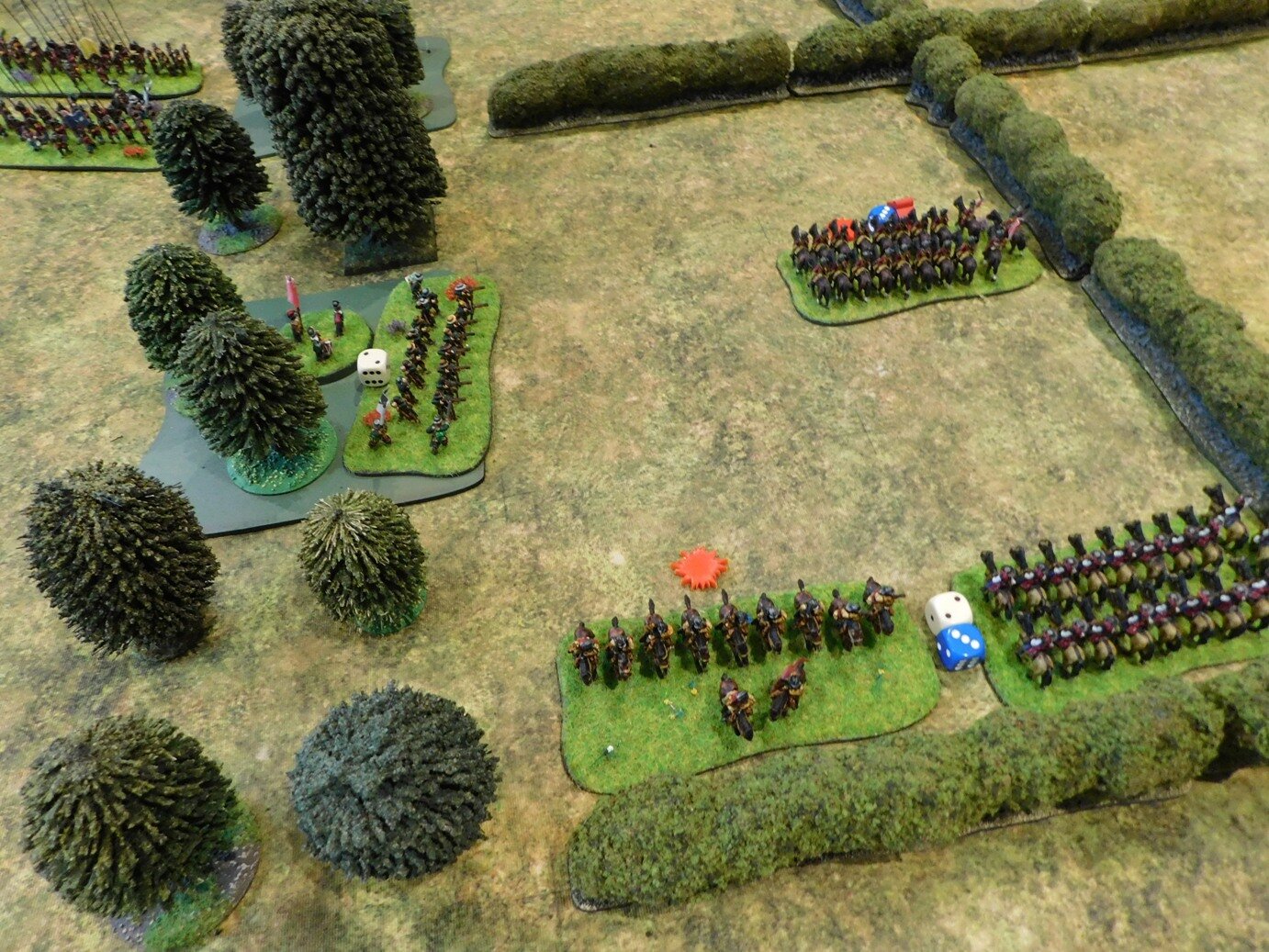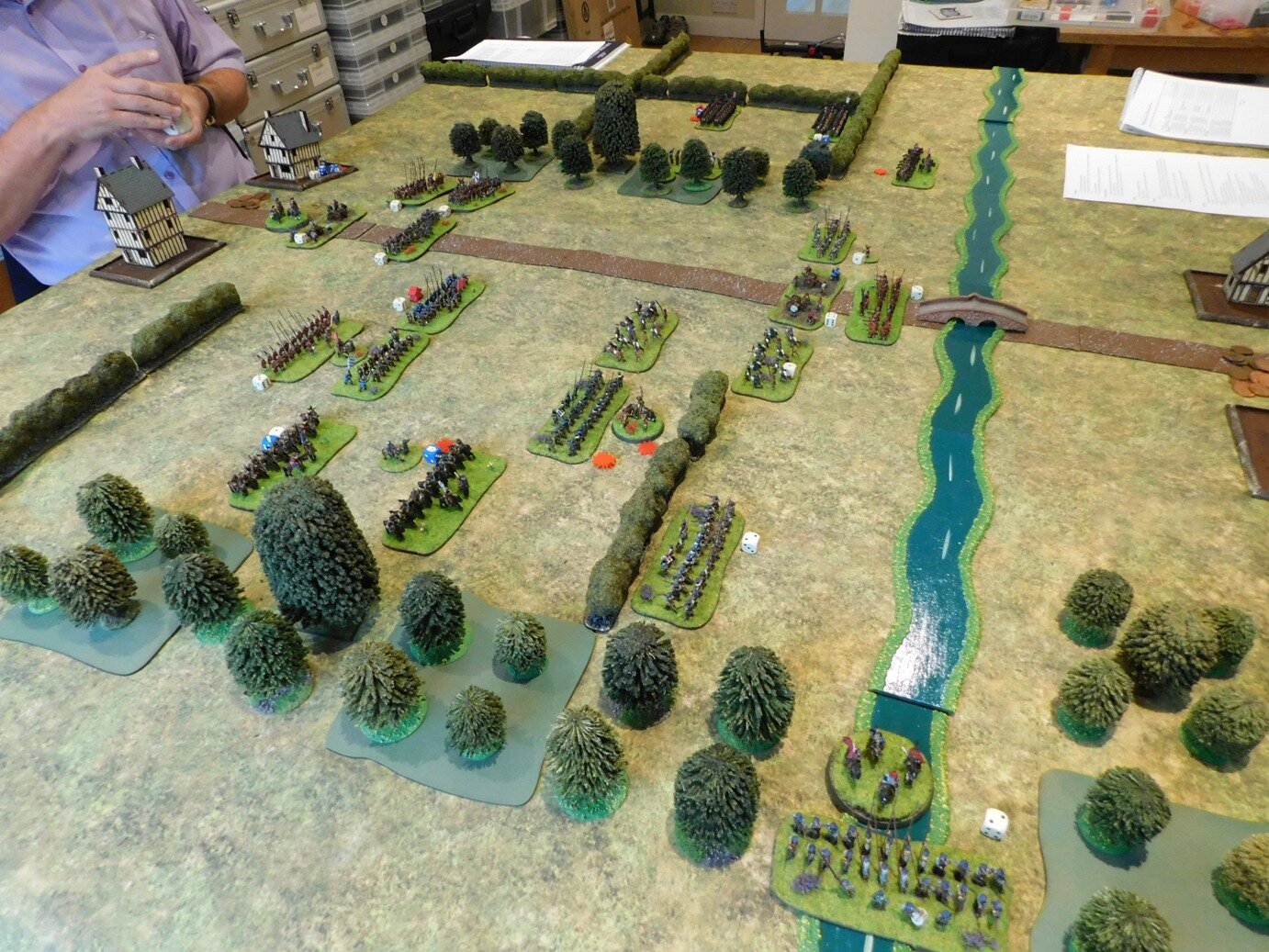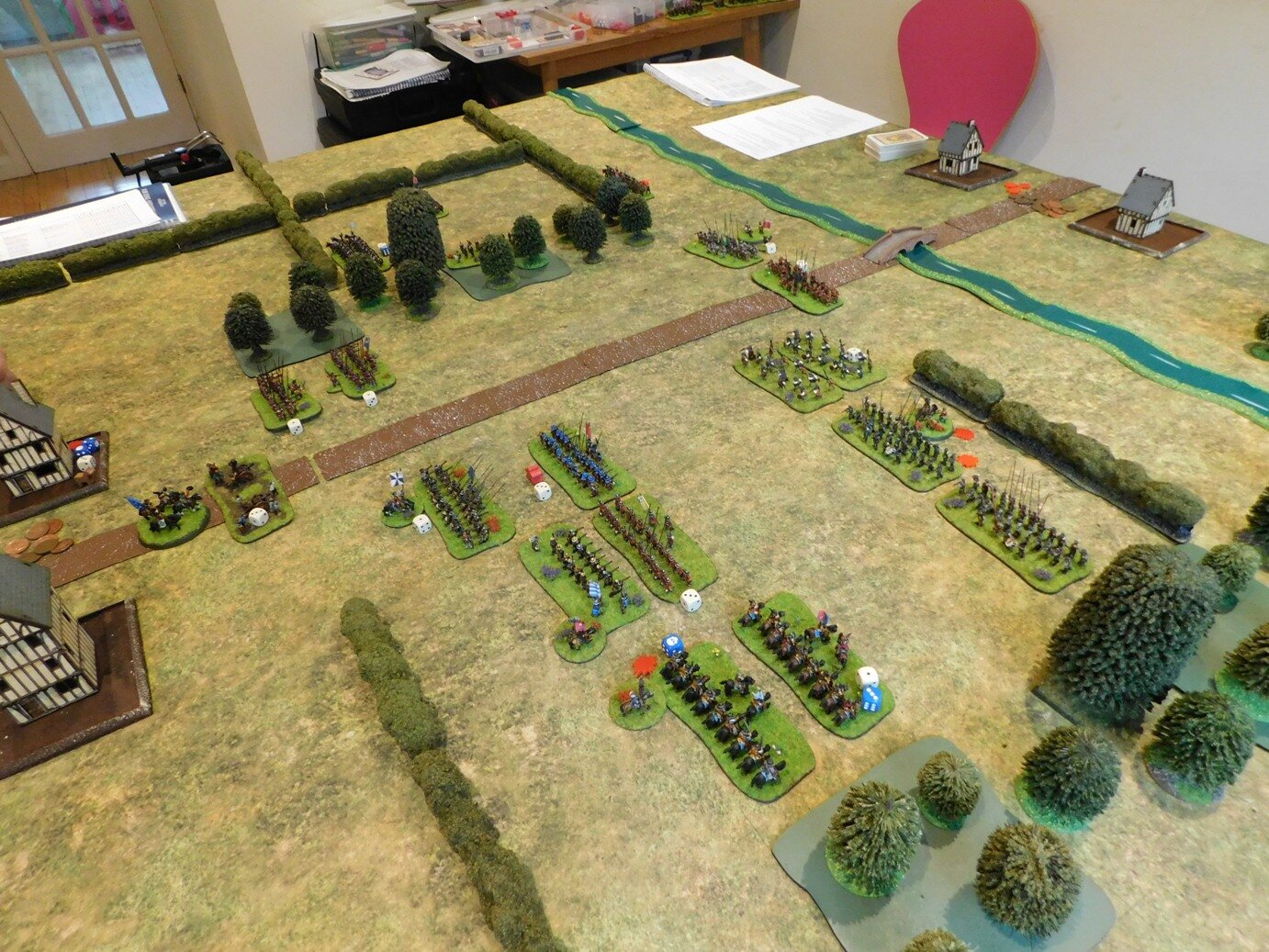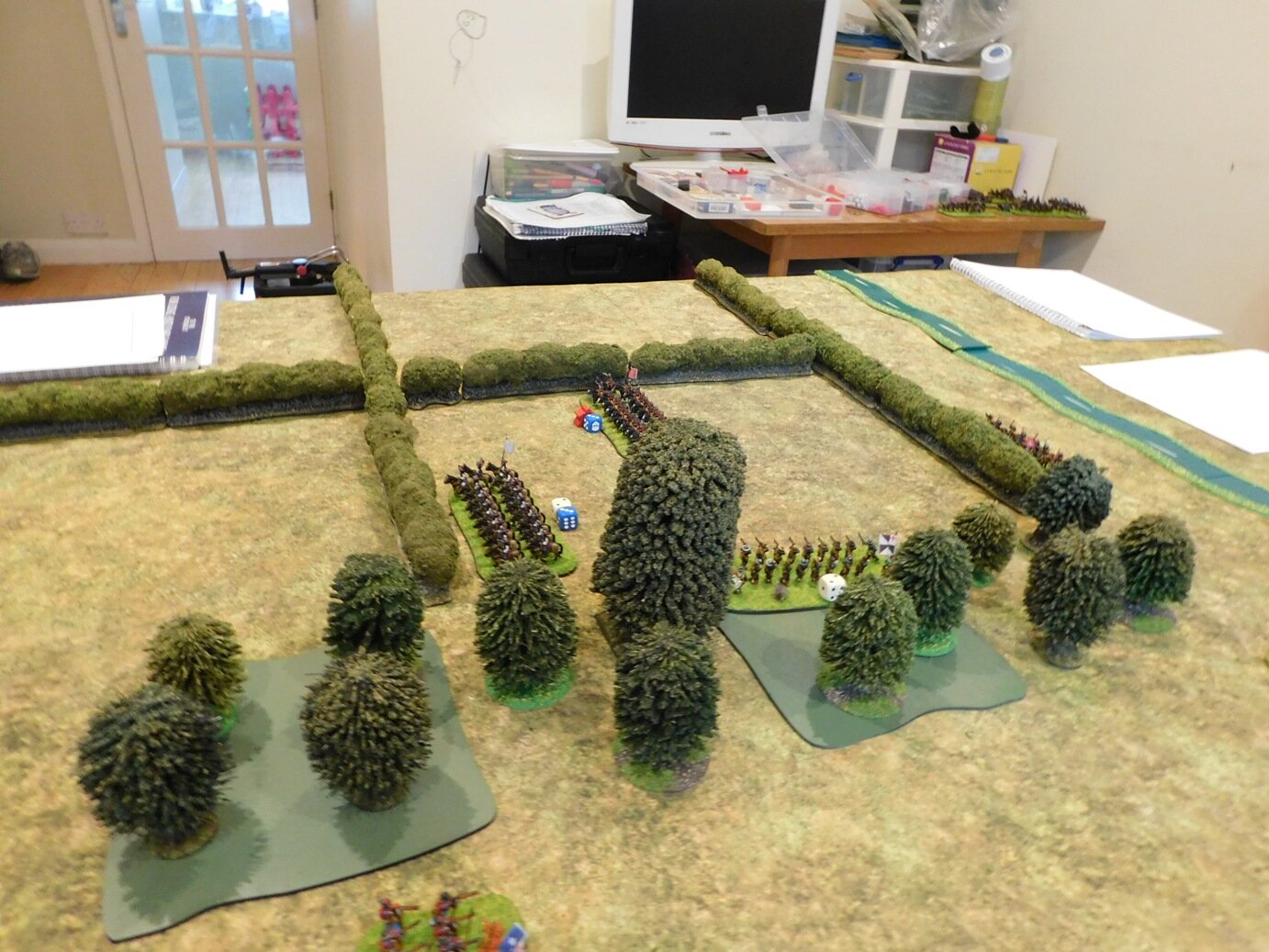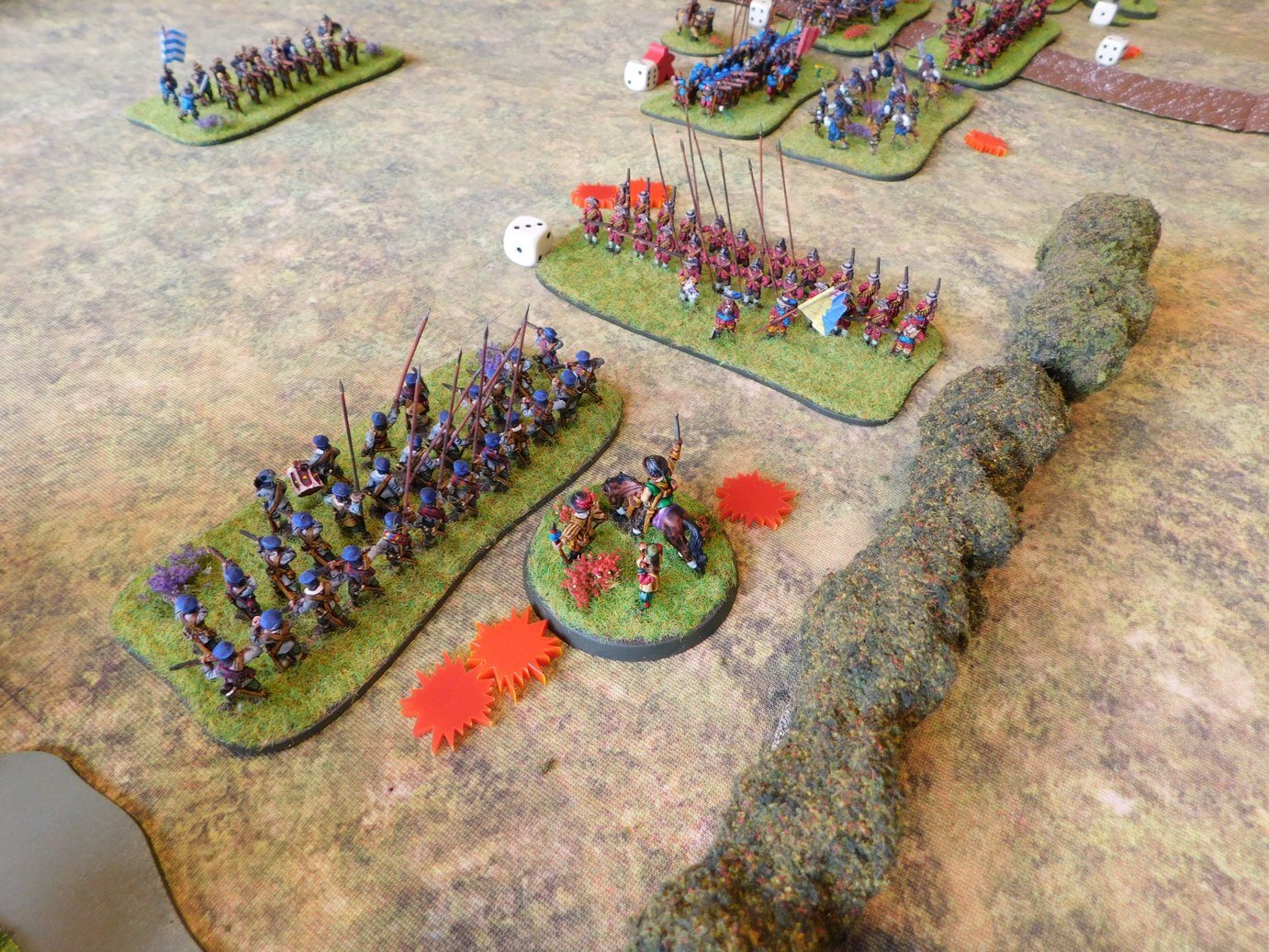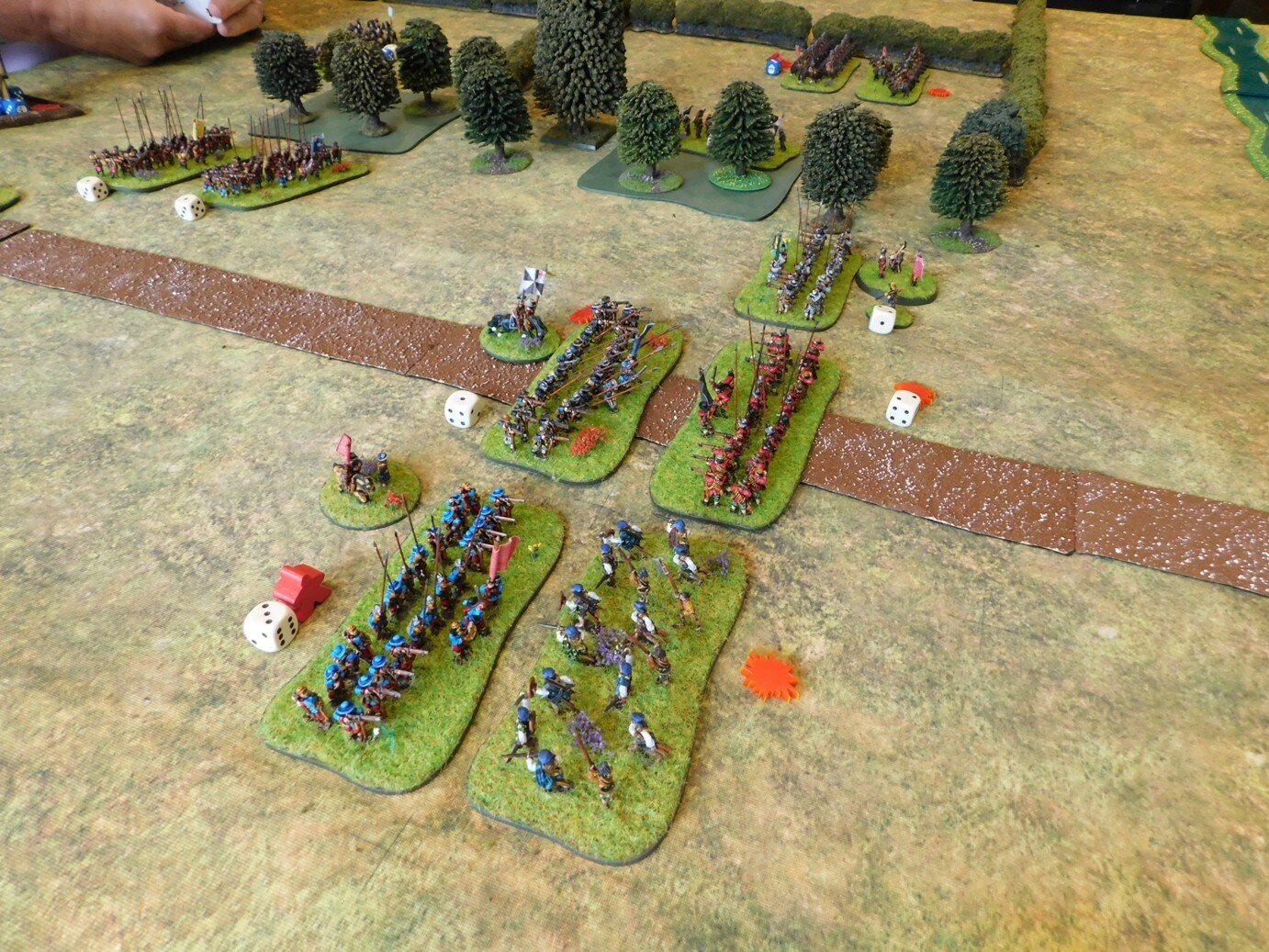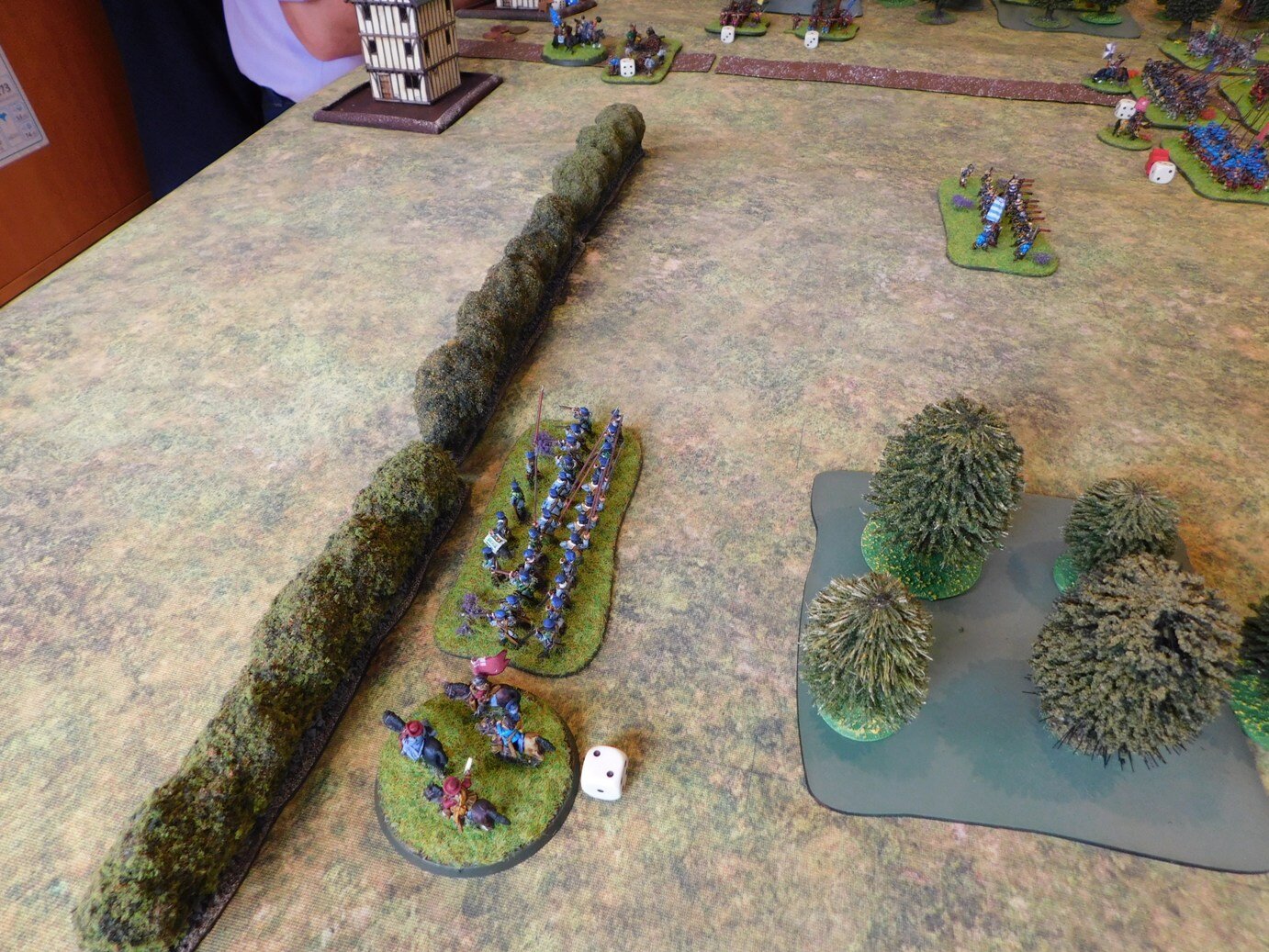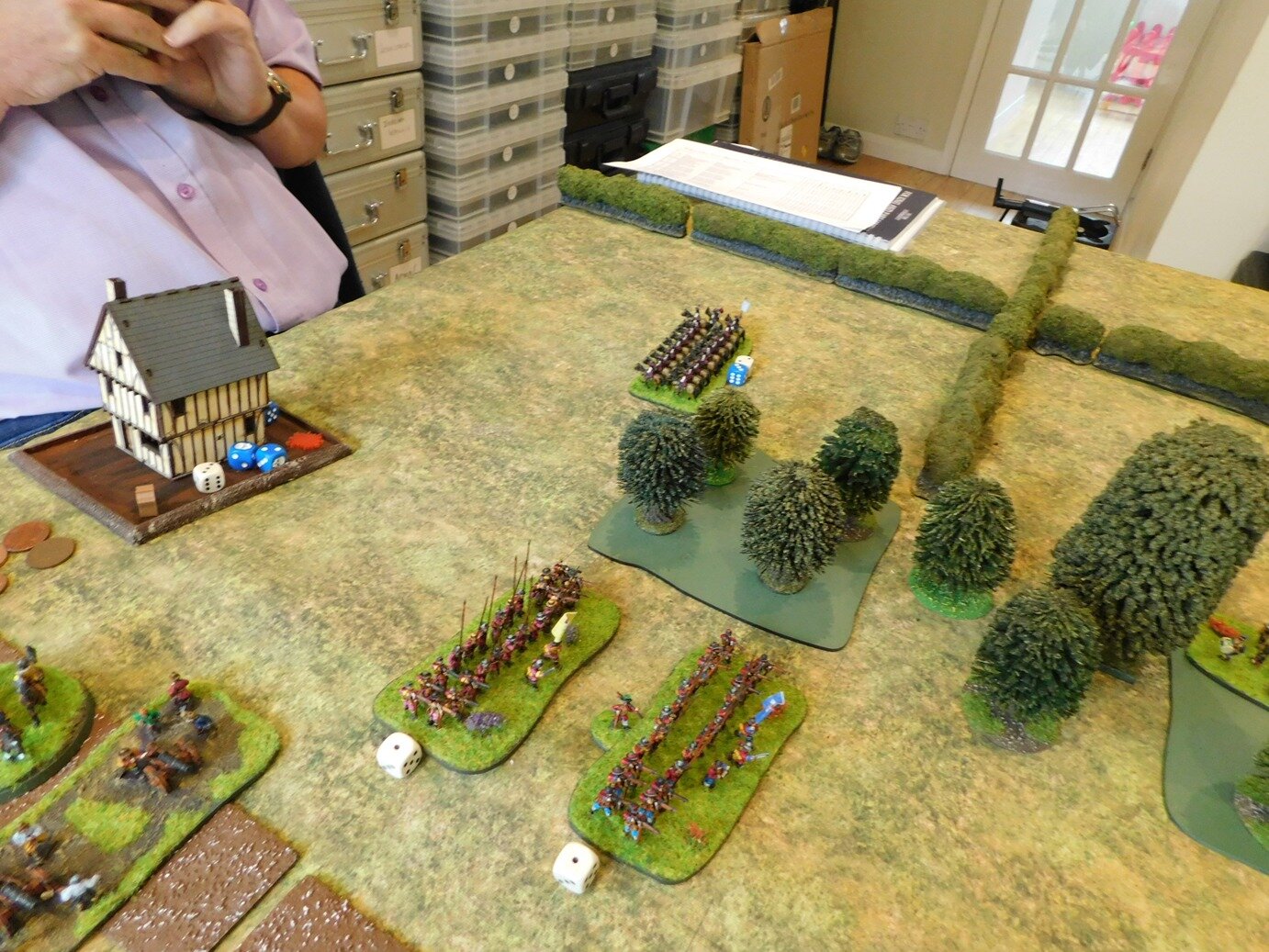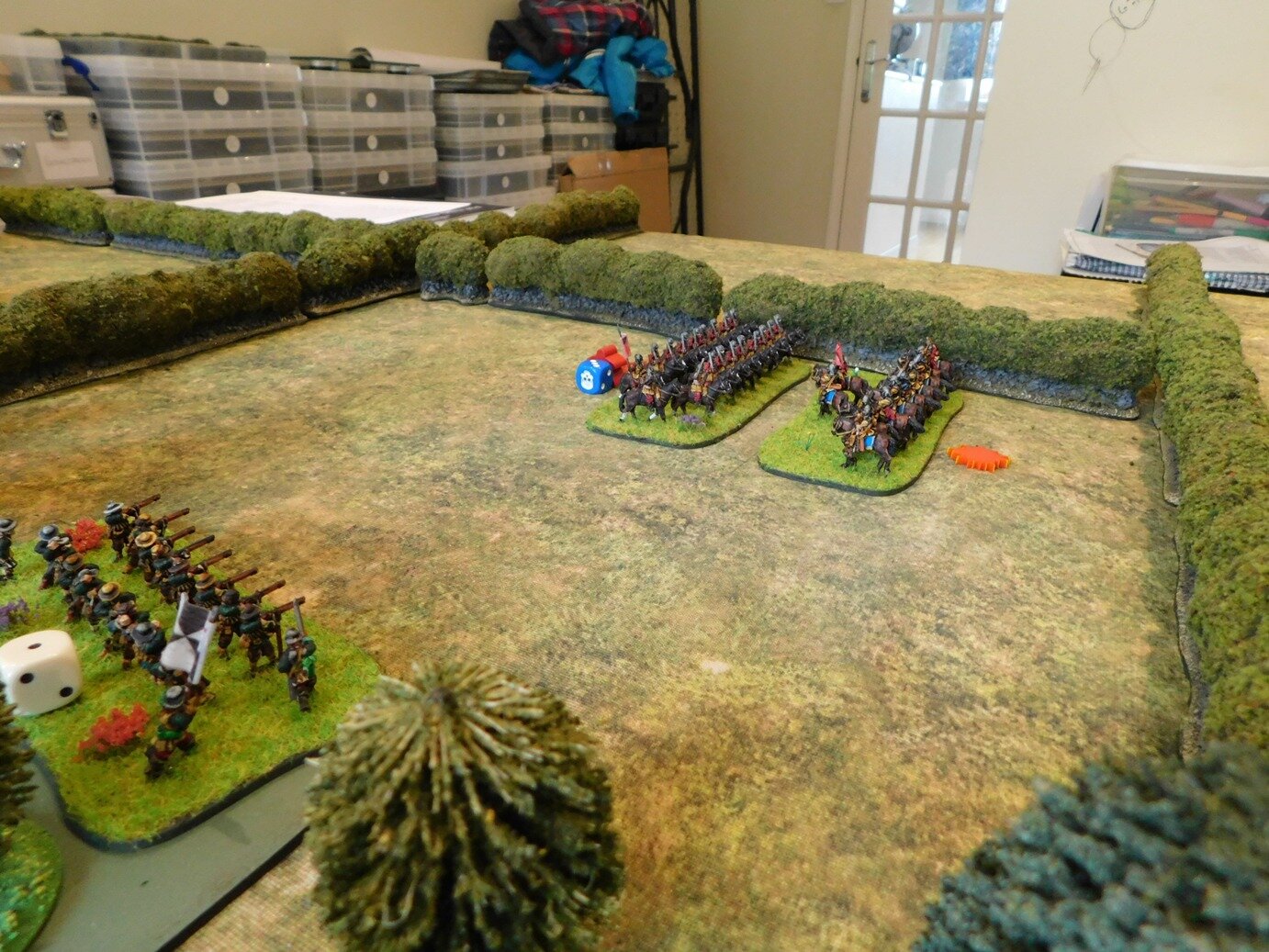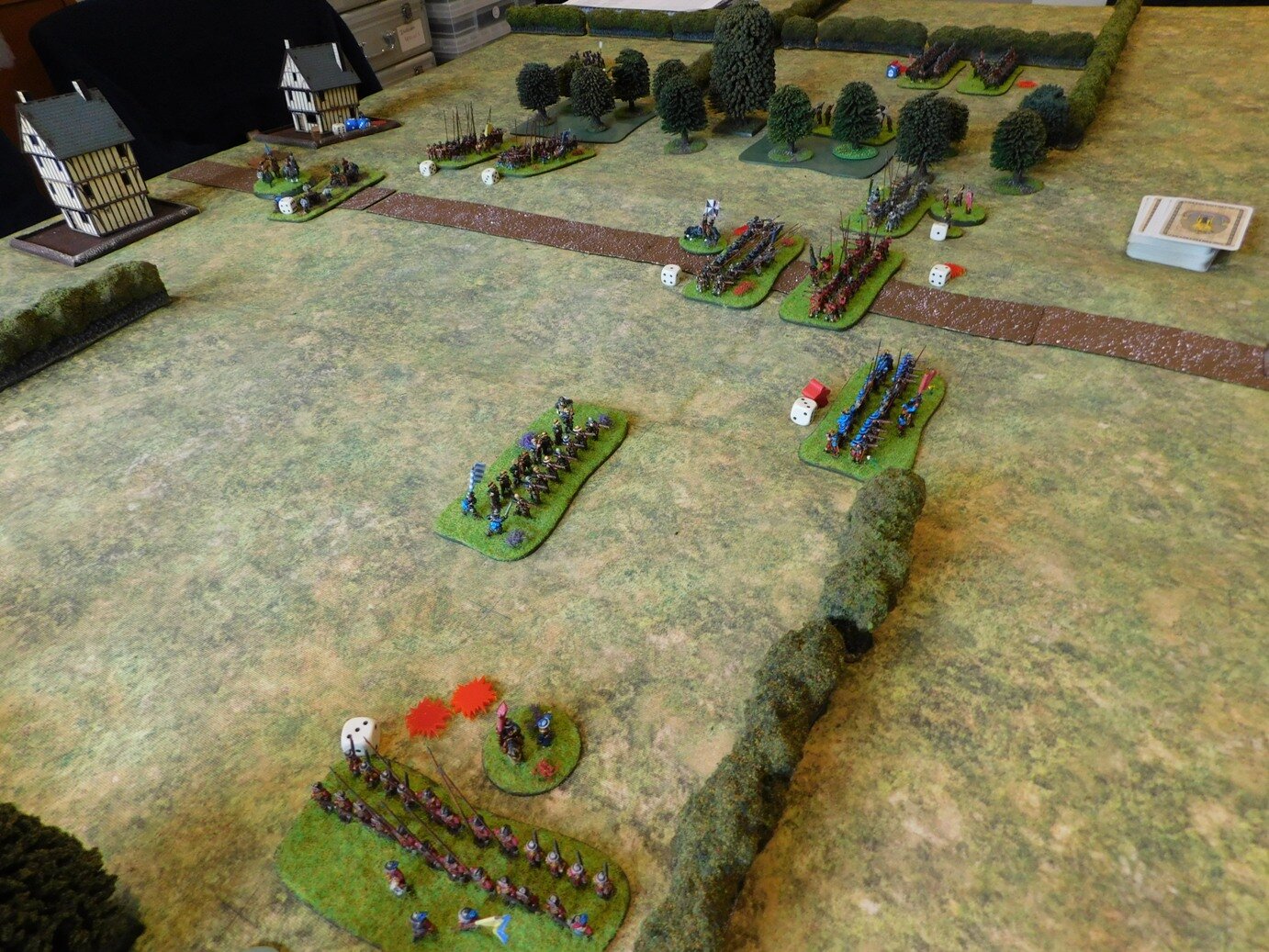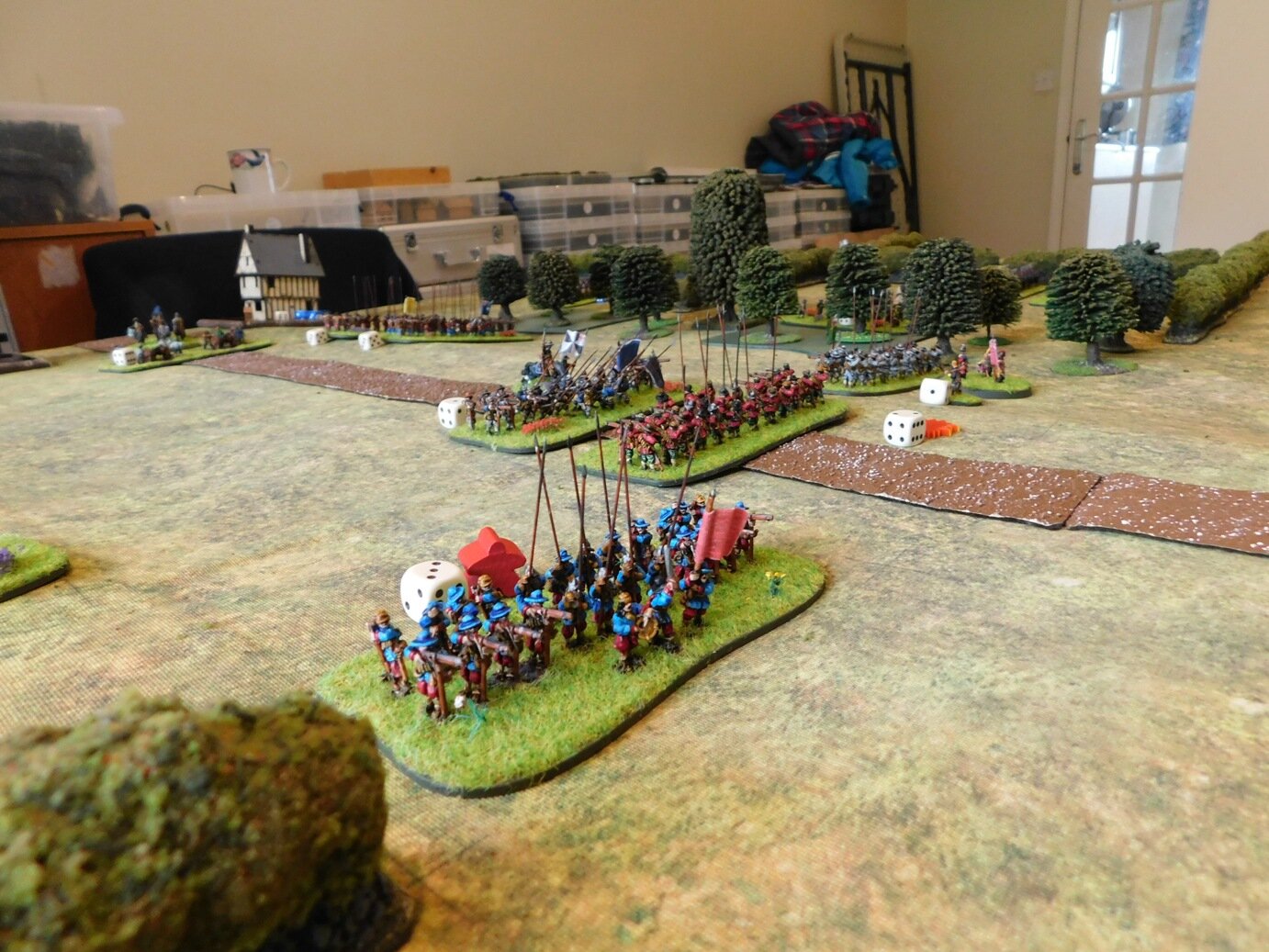Painting Epic Scots
/Friend John kindly gave me a couple of those Warlord Epic Scots Covenantor free sprues that came with Wargames Illustrated a few months ago, so it was time to get them painted and onto the table.
First up was a large unit of Commanded Shot. I decided to give them a natty pair of red trousers: not very dour but I fancied a change from Hodden Grey. The command figures came from Eureka: a bit taller than the Epic’s, but then you want some big men in charge!
As before, the epic slugs painted up very easily and were actually quite fun to do. In fact, it took me so little time to finish this lot that I went straight into painting a second batch, this time with more traditionally coloured trews!
The flags, by the way, come from Maverick Models. They are a simple Cross of St Andrew custom printed for me by Steve, the proprietor. The cloth effect makes them very simple to use (much easier than paper flags) and they end up looking very good indeed.
With two large units of Commanded Shot completed in record time, I could spare the effort to use some of the single figures on the sprues to produce three bases of Attached Shot: something to give my artillery a little better chance of survival on the battlefield.
These were obviously just like painting standard 15mm figures…they are nicely posed and I particularly like the chap priming his pan (front left on the right hand base).
Finally, although not Scots, or Epic 15mm scale, I also had a chance to paint up another Spear unit for my 28mm Venetians. These are Perry plastics and, as usual, a slight pain to build compensated for by the variety and realism of the poses that can be generated, and the ease with which they paint up.







